

European
Nuclear Society
e-news
issue 38: November 2012
The Oxford English Dictionary states that the term eureka comes from the Greek word heurēka, meaning 'I have found it'. Archimedes cried out eureka when he discovered a method for accurately determining the purity of gold. The term has since become synonymous with memorable moments of enlightenment, triumph and euphoria; moments that signal a potentially epoch-defining turn of events. Eureka moments have invariably provided a springboard for pushing back the boundaries of accepted knowledge and blazing new scientific trails. When the apple famously landed on Isaac Newton’s head, when Ernest Rutherford first confirmed the splitting of the atom, or when Albert Einstein finally nailed down his theory of relativity, a chain reaction occurred that helped reassess accepted knowledge and challenge theories once written in stone.
The legacy of these early pioneers is great, but how relevant are their achievements within today’s context? Do they still resonate and teach us something, or are they simply nostalgic echoes of past glories? Well, opponents of nuclear energy regularly claim that nuclear energy is a tired and outdated energy source with no future and we often see how more “sellable” anti-nuclear news stories tend to dominate the media headlines. So, while it is important to remind people of how nuclear science has changed the way we understand the universe, revolutionised how we harness and deliver energy, developed new therapeutic applications that save thousands of lives every day and helped mitigate the crippling effects of climate change, we must also emphasise that it is still a hotbed of innovation where the eureka moments of tomorrow are being forged today.
That task was made easier by a recent discovery worthy of Newton, Rutherford and Einstein, that thrust nuclear research under the scientific spotlight. Such was its impact that it even forced the world’s media, at times rather grudgingly, to give it the oxygen of front-page publicity. For forty-five years nuclear physicists had striven to prove the predicted presence of a sub-atomic particle that could explain how matter attains its mass and indicate how the universe may have been created. The presence of such a particle had first been proposed by a group of scientists back in 1964. Award-winning Belgian physicists, Robert Brout and François Englert (the latter recently celebrated his eightieth birthday), both from the Université Libre de Bruxelles, and Peter Higgs, a British physicist from the University of Edinburgh, predicted its existence in a series of famous scientific publications. Their pioneering research was, amazingly, based on hand-written calculation because computers didn’t exist then. It triggered an epic search, of Holy Grail proportions, by teams of researchers around the world. They were hunting for the elusive “Brout-Englert-Higgs boson” - later referred to simply as the “Higgs boson.” Then, on 4 July 2012, scientists working at the CERN, the European Centre for Nuclear Research, in Switzerland, claimed they had discovered a new particle consistent with the Higgs boson. It had been discovered thanks to the Large Hadron Collider (LHC), the world's largest particle accelerator.
The final identification of the Higgs boson was indeed a eureka moment. It made global headlines and raised global implications. Some textbooks will have to be rewritten and some preconceived ideas and misconceptions revisited. Many ENS NEWS readers may well have been personally involved in this research and must have shared a common sense of elation at the news of this career-defining discovery.
What the nuclear scientists at CERN, and elsewhere, have achieved, and what the discovery of the Higgs boson signifies for the future, are hardly symptomatic of an outdated energy source that is rooted in the past; a spent force when it comes to innovation. While physicists, theologians and philosophers continue to debate the Big Bang theory, the Higgs boson should provide the nuclear science community with a new platform for advancing both the conceptual and real boundaries of research to a whole new level. That community is eternally grateful to the pioneering work of Brout, Englert and Higgs, as well as to that of numerous others whose names may be less well-known but whose contribution is no less significant. The fruits of that work, and of that of successive generations of researchers, have given new impetus to nuclear science. And long may it continue….until another eureka moment lights up the universe.
The last edition of ENS NEWS for 2012 starts with the traditional Word from the President, in which Marco Streit provides an overview and personal appreciation of what happened during the past quarter. Information and analysis on the mobility of young nuclear professionals is then provided by the results of survey recently carried out by ENS.
In the ENS Events section information on flagship conferences like ENC2012, PIME2013, ETRAP2013 and RRFM2013 illustrate just how busy the ENS events calendar will be in the coming months.
Among the many stories sent in by our members is a technical product profile relating to a gamma ray tracer used at the Garigliano NPP that is being decommissioned in Italy, a report on the 50th anniversary of the Belgian Association for Radiological Protection, information on a CENEN Summer School course and news of an ambitious laser technology research project that is being carried out jointly in Romania the Czech Republic and Hungary.
On the YGN front, two different appraisals are given of the recent successful TopFuel 2012 conference, in Manchester (UK). There are also reports on the 2012 International Youth Nuclear Congress (IYNC) that took place in Charlotte (USA) and on the activities of the Slovak Nuclear Society at a Summer Music Festival.
The European Institutions section presents a personal insight into the work of the European Commission’s Site Management and Nuclear Safety Unit, in Karlsruhe, Germany.
Finally, the World News section features a story on the 4th FEM’ENERGIA Award, which recognises the achievements of women in promoting gender development in the nuclear sector and a profile of NUCLEARTV, a multi-media and social media platform for the nuclear community.
I know it is only November, but since ENS NEWS N° 39 is not due to be published until next year I would like to take this opportunity to wish readers a very Merry (and early) Christmas and a happy, prosperous and healthy New Year!
Mark O’Donovan
Editor-in-Chief, ENS NEWS
|
http://www.euronuclear.org/e-news/e-news-38/presidents-contribution.htm


Dear Members,
The third quarter of this year started with the highly successful TopFuel conference, in Manchester. This was followed by the prognosis made by Yukiya Amano, Director General of the IAEA, during his opening speech at the IAEA’s General Conference, in Vienna, that even in the most pessimistic case scenario nuclear capacity will grow by 25% by 2030.
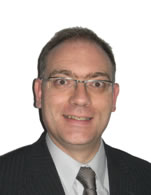 | At the 56th General Conference of the International Atomic Energy Agency (IAEA), which took place in Vienna, from 17 to 21 September 2012, Yukiya Amano, the Agency’s Director General, presented the IAEA’s annually updated report on the development of global nuclear power. As an ENS representative I was given the opportunity to join this meeting as an observer. Based on his new forecast, Mr. Amano indicated that "nuclear energy remains an important option 18 months after the accident, for many countries." In the forecast he stated that even in the most pessimistic case scenario nuclear capacity worldwide will grow by 25% by 2030. Europe will not |
play in important role in that scenario and, personally, I think this is very unfortunate.
The following week I was able to attend a meeting of the EHRO-N Group (European Human Resource Observatory in the Nuclear Energy Sector), where important work is done to analyse how the supply of future experts for the nuclear industry in Europe responds to demand. Do we have enough universities offering lectures on nuclear-related subjects? Are there enough students in the nuclear sector? Are the experts sufficiently mobile? These, and other important questions, are the main focus of EHRO-N’s members. ENS strongly supports the work that EHRO-N does and I kindly ask you to spend about 3 minutes of your time to fill in a short questionnaire that will support this challenging project (ehron.jrc.ec.europa.eu/).
During the meeting I was also able give a presentation on the nuclear education system in Switzerland, and in particular a project that the Swiss Nuclear Society repeated this year for the fourth time, the Basic Seminar. As you will read later on in this edition of ENS NEWS, it was once again a success story. I want to encourage our member societies to check out if this concept of a 3-day basic seminar could be adapted to suit your country’s particular context. We give a short overview of the status of the nuclear energy sector, starting with the general energy situation, and then launch discussions on the production methods of electricity, before going more deeply into the basic principles of nuclear. Reactor technology, types and safety are the focus of the second day of the course. On the third day the political and environmental background is examined. The seminar concludes with a visit of a NPP nearby.
From an EU policy perspective the third quarter of this year saw the publication by the EC of its Communication on the stress tests process. Speaking at a Nuclear Industry Safety Seminar, organised by FORATOM, Peter Faross, Acting Deputy Director General of DG Energy and Director of Nuclear Energy, reiterated one of the main conclusions of the Communication, namely that the overall safety level of Europe’s nuclear power plants was satisfactory and that as a result of the process not a single power plant was required to close. He added that a significant number of improvements still needed to be made and that all nuclear countries in Europe will be required to provide a National Action Plan detailing how they intend to implement these improvements by the end of 2012. These action plans will then be peer reviewed and an EC report on the peer review conclusions will be published. Finally, Mr. Faross also announced that the EC intends to put forward a Proposal on insurance and liability in 2013 and another one on the revision of the Safety Directive.
It was certainly a busy quarter and the next one promises to be equally so!
I look forward to seeing you at the ENC2012 conference, in Manchester, from 9-12 December.
Marco Streit
President of ENS
http://www.euronuclear.org/e-news/e-news-38/nuclear-professionals.htm

The European Nuclear Society, the European Human Resource Observatory in the Nuclear Energy Sector (EHRO-N), and Thomas Thor Associates have prepared a Mobility of Nuclear Professionals Survey. Following a similar survey in 2010 carried out by EHRO-N, the objective is to understand the mobility of nuclear professionals across Europe.
We would appreciate a feedback from as many professionals currently working in the nuclear sector as possible and invite you to fill in the above mentioned Survey, which you can find on this website: ehron.jrc.ec.europa.eu/ . It does not take a long time to complete!
We are also thankful in advance of your support in reaching as many of your colleagues and other employees in the nuclear energy sector in Europe as possible.
Thank you and we are looking forward to your contribution!
http://www.euronuclear.org/e-news/e-news-38/ENC2012.htm


ENC 2012 is expected to attract more than 800 nuclear professionals and will feature an extensive parallel Industry Exhibition that covers over 2000m2. A unique networking opportunity for professionals in the nuclear sector.
The ENC 2012 Programme is now available at www.enc-2012.org.
Confirmed key-note speakers include:
Mike Weightman, HM Chief Inspector of Nuclear Installations and Head of ONR, Office for Nuclear Regulation, UK
Alexander Bychkov, Deputy Director General, IAEA
Tim Stone, Senior Chairman of the Office of Nuclear Development of the Department of Energy and Climate Change of the UK Government
Sir John Beddington, Chief Scientific Adviser to the UK Government
Parallel Sessions will revolve around Nuclear New Build, Fuel Cycle, Plant Operations, Research Reactors, End of Use, Reactor Technologies, Nuclear Education & Training, Nuclear in Life Sciences and Nuclear in Civil Society. ENC 2012 will be a real platform for the nuclear community to share their experiences and to learn about the latest developments in nuclear!
For more information and registration check out www.enc-2012.org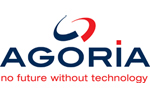 |
|---|
ENC 2012 Sponsor
http://www.euronuclear.org/e-news/e-news-38/ENC-Careers-Event.htm

As the largest European society representing professionals active in the nuclear science and industry community, ENS is well-placed to act as a catalyst for bringing together employers and employees in the nuclear sector. It was therefore decided to use this years’ ENC 2012, which will take place in Manchester (UK) from 9-12 December, as a springboard for organising an event called ENC 2012 Careers. Combining these two events will enable participants to fully exploit the synergies that exist between them.
ENC 2012 Careers brings together some of the most renowned employers active in the nuclear sector, including Westinghouse, EDF, Atkins, Slovenske Electrarne (ENEL Group), Rolls Royce, ONET Technologies and AREVA. They offer job opportunities that correspond to 44 different profiles in areas as diverse as safety and process engineering, procurement management and marketing.
Candidates from over 30 countries have responded to these offers. They were mostly highly skilled (59% having already obtained an MSc, 21% a BSc degree and 20% a PhD) and had applied whilst at various different stages of their career – ranging from outright beginners to professionals with more than 10 years of experience. So, not surprisingly, most of them were offered a face-to-face interview with a future employer!
On 9 December, professionals interested in having a career in nuclear will be able to meet prospective employers at Manchester Town Hall and discuss their futures.
ENC 2012 Careers will start with an Information Session where all companies will present themselves.
In a professional but relaxed environment that is conducive to candidate-recruiter interaction, candidates will be given an opportunity to contact companies at their Information Desks. This is THE not-to-be-missed chance for an interested prospective employee to meet representatives from many different companies, and all within a short period of time. Even if you are unsure about whether or not to meet with a company representative just go ahead and approach one; give your personal pitch and highlight the skills you have to offer – you never know where it will lead you. You’ve got nothing to lose and everything to gain. What you could accomplish at a careers convention like this might take you months to achieve on your own!
Be ready to network with other candidates. A careers convention is a great opportunity to connect with them.
ENC 2012 is expected to attract more than 800 nuclear professionals and will feature an extensive parallel Industry Exhibition covering over 2000 m2. It offers a unique get-together opportunity for professionals in the nuclear sector! All career opportunity candidates will be invited to the ENC 2012 Welcome Reception and will also have a possibility to visit the Industry Exhibition.
It is still possible to register your presence at ENC 2012 Careers on 9 December, at the Manchester Town Hall. To do so, simply fill in the registration form and send it to careers@euronuclear.org.
For more information for the ENC 2012 Career Event check out ‘Career Event’ at www.enc-2012.org
Career Event Partners:
 |
|
|---|---|
 |
|
http://www.euronuclear.org/e-news/e-news-38/pime2013.htm


From 17-20 February 2013, the attention of Europe’s nuclear communicators will be firmly focused on Zurich, when the PIME conference bandwagon reaches Switzerland’s most populous city. 2013 will be a special year, as PIME will celebrate its Silver Jubilee. For a quarter of a century this annual international conference has provided a unique focal point for professional nuclear communicators from across the world to get together and address the major communications issues of the day, to identify solutions to common problems and to develop the tools needed to meet common challenges.
Twenty-five years and still going strong - PIME’s longevity is a testimony to its success!
The 2013 PIME Award for Communications Excellence will be presented to the communications campaign that PIME delegates decide is the best. Send in your entry to PIME Award 2013 now, and get the peer recognition your work deserves!
Switzerland again plays a significant role in the development of the conference, since the very first PIME took place in Montreux. In 2013, it will have come full circle. PIME is “coming home.”
More information about PIME 2013 is available online now. Registration will be available online as of mid-November, so watch this space!

 |
http://www.euronuclear.org/e-news/e-news-38/ETRAP2013.htm


12 - 15 March, Vienna, Austria
To fully benefit from the peaceful uses of ionising radiation that are found in industry, medicine, agriculture and research, and nuclear power generation, both people and the environment need to be protected. Education and training in radiation protection is therefore essential to building and maintaining the competent workforce that is necessary for establishing and maintaining the safe and well-regulated working environment that is demanded by modern society. The importance of such education and training has been acknowledged for many years, and a wide range of programmes and initiatives have been established at the national, regional and international level.
ETRAP 2013 provides a forum for decision-makers, regulators, educational and training providers and practitioners, researchers, radiation protection experts and persons from international organizations to discuss the current state of the art in education and training in radiation protection. The conference aims to identify current trends and good practices in the area while looking to the future so that society can continue to benefit from the many uses of ionizing radiation.
The conference will feature the following topics related to education and training in radiation protection:
Harmonization of terminologies and definitions, taxonomies, learning outcome descriptions, comparison of ECVET/EQF/ECTS and other systems of accreditation of continuous professional development
Efficiency and effectiveness of training: measuring tools, key performance indicators, how is the overall radiation protection culture improved by E&T? What are other factors influencing work floor behaviour?
Regulatory aspects, accreditation and certification processes, (inter)national infrastructure for E&T, development of national strategies
(Inter)national collaborations and networks, (inter)regional approaches and collaborations
Sector specific training needs: medical, nuclear, industrial, NORM, other
Tools and resources, methods of delivery, introduction of modern learning tools
Mechanisms to systematically update E&T courses: incorporation of research findings into the E&T curriculum
Feedback from experience, including incidents and accidents, into radiation protection E&T
Evolution in training contents, introduction of ethical aspects, communication and soft skills, …
Attracting the young generation's involvement
Public education/communication on radiation effects and radiation protection
More information on ETRAP 2013 is available at www.etrap2013.org
ETRAP 2013 Conference Secretariat
and:
supported by:
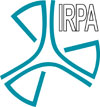 |
|---|
http://www.euronuclear.org/e-news/e-news-38/rrfm2013.htm


The RRFM 2013 Programme Committee is calling for both oral and poster presentations regarding
All Key Areas of the Nuclear Fuel Cycle of Research Reactors
Innovative methods in research reactor analysis and design
Utilization of Research Reactors
New Research Reactor Projects
Research Reactor Operation and Maintenance
Complementary Safety Assessment of RRs following the Fukushima-Dai-Ichi NPP’s Accident
Mark your diaries and be a part of it! Upload your abstracts on www.rrfm2013.org before 16 November 2012.
Authors should submit their abstract text in English through the Abstract Submission System on Reference number ISBN 978-92-95064-18-8 |
organised in cooperation with:
http://www.euronuclear.org/e-news/e-news-38/gammatracer.htm

The Garigliano NPP, located in the south west of Italy, was in commercial operation from 1964 to 1978, but due to heavy costs it shut down in 1982. After the Italian government’s referendum in 1988, a decision was taken to stop nuclear electricity generation in the country. All four Italian NPPs, which had previously been operated by ENEL, were handed over to SOGIN Nuclear Plant Management Company for all operational activities regarding the dismantling, decommissioning and site restoration of the plant.
After finalisation of the preparatory works, the Garigliano site entered the third phase of decommissioning in 2009. After demonstrations and tests that were performed in 2007 at the site, the advantages, easy operation, flexibility and mobile use of the GammaTRACER/ShortLINK system convinced the operators of its efficiency. For such tasks, which are characterised by the frequently changing scenarios typical of a radiological incident, it is important to know quickly evolving gamma radiation levels in order to protect operational staff. The GammaTRACER/ShortLINK system will especially be used when the earth works begin. Following a tender procedure in 2011, a contract was awarded for seven GammaTRACER XL2 radio probes and a new display-alarm unit mounted in a weather-tight casing suitable for outside operation. All data is transmitted via a ShortLINK radio module to the receiver station and visualised on a laptop, including maps of specific locations.
All components can be fixed on a tripod and are powered by the internal GammaTRACER battery, which under such conditions can operate autonomously for about six months (without display/alarm up to ten years). The system was supplied in May 2011 and became operational in June. The actual decommissioning procedures will continue until 2016. The system’s operating profile provides a benchmark for other NPPs for which similar procedures are scheduled.

Garigliano nuclear power plant reactor building in 1970, to be decommissioned until 2016
http://www.euronuclear.org/e-news/e-news-38/BVS-ABR.htm

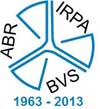
Radiation protection has greatly contributed to the protection of mankind and the environment against the potentially harmful effects of ionising radiation and radioactivity, whilst at the same time allowing the benefits of their use to be exploited. Radiation protection covers a wide range of fields and applications related to the development and operation of nuclear and radiation-related technologies: nuclear energy production, industrial applications, medical diagnosis and therapies. Unfortunately, there is a negative nuclear legacy that exists across the world that still has to be dealt with. This relates in particular relating to former activities like military nuclear applications, as well as accidents, mining operations and NORM material activities.
Over the past decades, radiation protection professionals have contributed actively to the development of legislation and regulations, to monitoring and control activities, to modelling and to the prediction of consequences and risk assessments. They have formed national and international Radiation Protection Associations to represent their interests. These associations organise debates on scientific issues and legislation, make radiation protection part of daily practice, exchange ideas and run training courses.
In 2013, the Belgian Association for Radiological Protection BVS-ABR celebrates its golden jubilee. On this occasion, the BVS-ABR is organising a symposium, not only to celebrate its history and anniversary, but also to focus on on-going issues and challenges for the future. These challenges are multiple: How to deal with the rapid evolution of technology? How to raise awareness and to guarantee adequate protection without taking away the large benefits to society of using ionising radiation, especially in the medical domain? How to attract young professionals to the field? How to clarify the role and responsibilities of a radiation protection expert? How to learn from accidents? How to engage with society?
During this symposium from 8-10 April 2013, taking place in hotel Metropole, a historic place in the heart of Brussels where Solvay organised the first scientific conference worthy of this name, a number of key note lectures will set the scene. This input will be complemented by oral and poster communications with a broad professional audience.
You are all cordially invited to participate in the symposium and to contribute abstracts. Further information on how to submit an abstract or on how to register is available at: www.bvsabr.be/50Y .
On behalf of the BVS-ABR, I looking forward to meeting many of you during the symposium,
Frank Hardeman
BVS-ABR
http://www.euronuclear.org/e-news/e-news-38/SNS.htm

From October 9-1, the Swiss Nuclear Society (SNS) successfully conducted its 4th Seminar on Basic Knowledge in the Field of Nuclear Power. Experts gave the 39 participants an overview of several topics regarding the use of nuclear power, i.e. energy demand and production, the basic physics of nuclear fission, the history of nuclear technology, nuclear fuel, a repository in Switzerland, the basics of radiation and radiation protection and risk and safety features.
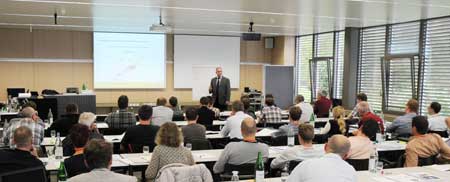
The visit of the nearby nuclear power plant at Muhleberg (BWR, 373 MWe) complemented the knowledge that the participants acquired. The seminar was held at the Federal Office for Sport, in Magglingen, about 30 km northwest of Berne.
Within the space of two years, this SNS seminar has been able to provide information to over 150 people. The participants have typically come from nuclear power plants, research centers, utilities and companies active in the nuclear electric power industry. The seminar provides an ideal opportunity for both new and more experienced employees working in the nuclear industry to get in touch with each other and to discuss issues with experts. The next SNS seminar on basic knowledge in the field of nuclear power is scheduled to take place in October 2013.
Here is a link to SNS seminar (in German):
joomla.sns-online.ch/cms
http://www.euronuclear.org/e-news/e-news-38/BME.htm

On the 12 September 2012, following an agreement reached between Hungary and Vietnam, a programme of nuclear training for forty Vietnamese university lecturers began at the Institute of Nuclear Technologies of the Budapest University of Technology and Economics (BME), in Hungary. During the three-week course the Vietnamese experts attended lectures, given in English, on the safe use of nuclear energy. They also performed laboratory experiments at BME’s Training Reactor. After the course their training continued for a further three weeks at the Paks NPP.
The objective of the training course was to help the seven largest universities in Vietnam to prepare for the education and training of a future highly-qualified nuclear workforce. According to a decision of the Vietnamese government, Russian companies will build and put into operation two 1200 MW pressurized water reactors in the country by 2020.
Dr. Gábor Péceli, the Rector of BME said that BME is ready to receive groups of university lecturers from abroad for training, and is open to further cooperation too. Dr. Attila Aszódi, the Director of the Institute of Nuclear Technologies at BME, emphasised that this training was only the first of a series of such courses planned, since two other groups of 40 university lecturers will be arriving in Budapest - one at the end of October 2012, and the other in March 2013.
Mr. Pál Kovács, Secretary of State for Energy Affairs at Hungary’s National Development Ministry, stressed in his welcome address that these Vietnamese experts will have an essential influence on the modern history of their country, since they will help the country to introduce and put into action a new technology that will serve a new, knowledge-intensive industry. They will also play an important role in ensuring the safe, long-term use of nuclear energy.
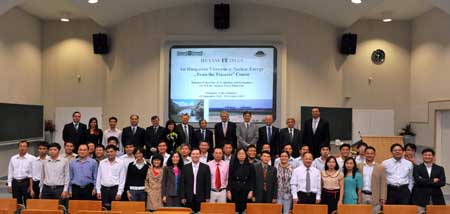
Ngo Duy Ngo, the Vietnamese Socialist Republic’s Ambassador to Hungary, outlined that this training course was the result of one year’s preparation. This can be considered as fast and effective in view of the administrative obstacles that had to be overcome. Vietnam respects Hungary’s nuclear knowledge and expertise very highly, as well as the preparedness of BME and Paks NPP to transfer this knowledge to the Vietnamese experts.
For further information contact: Prof. Dr. Attila ASZÓDI, Director
Institute of Nuclear Techniques of BME
www.reak.bme.hu
http://www.euronuclear.org/e-news/e-news-38/bulgaria.htm

Bulgarian Nuclear Society, in cooperation with European Nuclear Society (ENS), Bulgarian Atomic Forum (BULATOM) and Kozloduy NPP held its annual conference "Nuclear power for people" which took place in Hissar, Bulgaria, 10-13 October, 2012,

Hissar - world-famous spa resort is situated in the centre of Bulgaria, in the Southern slopes of Sredna Gora Mountain, 42 km North of Plovdiv (the second biggest town in the country) and 160 km East of Sofia (the capital of Bulgaria), close to the famous Valley of Roses.
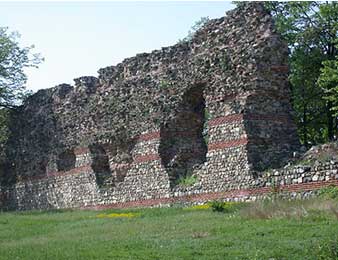 |
A spa resort from 7000 years with 22 natural and hydromineral sources, with a total exploitation flow of about 2700l/min and a temperature of 37-52C. The resort of Hissar is a little oasis, which combines the healing power of the mineral water, the unique archaeological treasure, the fresh air and calmness. If you visit this fantastic place even once, you will love it forever. |
|---|
The conference was an anticipated event for specialists in all fields of application of nuclear energy fro the benefit of the people, because it allows for the exchange of ideas and experiences between specialists in nuclear field, covering a vast range of topics on alternative energy sources, radiation protection, environment protection and others.
During the conference the referendum on Belene NPP and public awareness was discussed.
This large scale scientific event brought together local and international experts within three days and produced interesting scientific papers. Reports and discussions at the conference were focused on the applications of the nuclear science for the public prosperity and the training of specialists for the nuclear industry.
In a separate session the activities CORONA were presented, a project of the Seventh Framework Programme of the European Commission, which aims to create a center of competence for nuclear reactors technologies and applications.
Bulgaria has an active scientific and applied research capability in the nuclear field and professionals with extensive experience and international recognition.

An important manifestation of the conference was the traditional competition for young authors. The young specialists had the opportunity to present their work and the three bestones received an award:
First award – Vasil Milkov, Sofia University "St. Kliment Ohridski", Sofia, Bulgaria, “Multisection 2-π detector of thermal neutrons fordiffraction studies on microsamples in axial geometry”
Second award – Severina Ivanova, University Hospital St. Marina, Varna, Bulgaria, “Calculating, and analysis (of the radiation protection and shielding of Nuclear Medicine Center including PET/CT center”.
Third award – Yoto Georgiev, Technical University of Sofia, Bulgaria, “simulation of the experiment for quench-12 with computer code athlet-cd2.2a”
There was an additional award for Svetlin Philipov, Risk Engineering, Sofia, Bulgaria, “assessment of BORON ACID distribution from reverSed flow at PRISE loca”
There was also a best poster award, for the young author M. Kocheva, INRNE - BAS, Bulgaria for the poster “Test of the new TRANSURANUS version v1m2j11 against Russian experimental data”
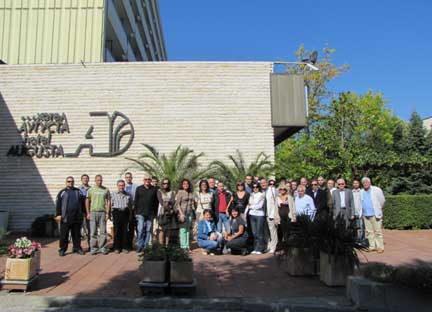
The conference was very interesting. A number of issues were also raised from a scientific management point of view. All scientific and technological papers from BgNS conference will be published in the “BgNS Transactions” - a science and technology journal.
Bulgarian Nuclear Society expresses its concern for preserving and ensuring the necessary human resources for nuclear energy today and in the future.
October, 2012
Sofia, Bulgaria
Ms. Boryana Atanasova, M.Sc.
Bulgarian Nuclear Society
Executive Secretary
Phone: (+359 2) 979 55 83
Cell:-(+359 87) 7 382 384
Fax:-(+359 2) 975 3619
E-mail: b_atanasova@inrne.bas.bg
http://www.euronuclear.org/e-news/e-news-38/cenen.htm

By K. Katovský, M. Malá, J. Prehradný, O. Zlámal
Summer time is certainly not vacation time for a group of nuclear scholars and engineers involved in the CENEN (Czech Nuclear Education Network). They are busy organising the annual Summer School of Nuclear Engineering (SSoNE) in Počátky, a small lively town on the Bohemia-Moravia border, in the Czech Republic. And summer 2012 was no exception. For the fifth time students from various Czech nuclear-related universities were offered a chance to follow a one-week nuclear course, taking part in debates with nuclear professionals and visiting nuclear facilities - and all in a relaxed atmosphere and transparent environment.
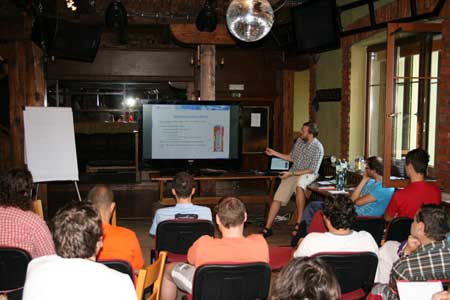
Ondřej Zlámal is presenting about relation between applied nuclear research and commercial development of nuclear energy.
Every summer school is organised under one main headline topic – and this time the topic was Before we start building … The topic alludes to the much-discussed - and so far unconfirmed - expansion of Temelín NPP by the addition of two more units. Temelín NPP plays a central part in the CENEN’s SSoNE as it is just one hour away by bus and provides an ideal location for a technical visit. Such visits are mutually enriching experiences, both for students who, often for a first time, can have a finger on the pulse of an operating nuclear power plant, and for Temelín staff who get to meet bright and willing-to-learn students who might one day become their future colleagues.
Even though the Czech Republic is a largely pro-nuclear country, it is rather small and so the possibility of getting a nuclear education in the Czech Republic is limited to attending one of a few technical universities. The latter are not always strictly focused on nuclear engineering. This results in a rather broad spectrum of SSoNE participants; all are somehow “nuclear”, but each has a different background that must be taken into account. This year four technical universities were represented by twenty-one students from eight departments. The great majority of students were studying power engineering; the rest included a mixture of mechanical, material and nuclear engineering students. Participants were divided into four teams that competed in a week-long game centred on the expansion of Temelín NPP, called "Temelín, build up!" The game was quite similar to Ludo: all teams started with a greenfield site, were given an opportunity to build and had to overcome a variety of challenges, such as a feasibility study, an environmental impact assessment (EIA), a specific unit design and selection of vendors to choose from, etc.
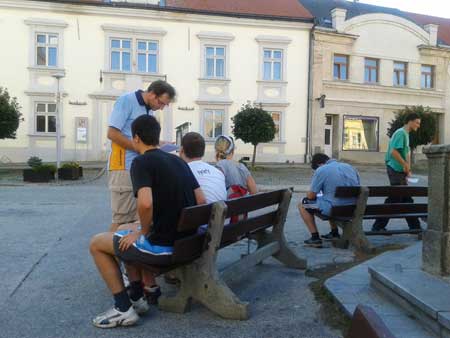
One of outdoor activities: cipher game around Počátky town
On the first day of the course, which was organised under the heading of How about piece of cake? - and before they were even introduced to each other or the rules of the summer school - students visited the only operating uranium mine in use in central Europe. This is the Rožná I mine. Nineteen students went down the mine shaft to a depth of approx. 1050 m underground. The Rožná I mine belongs to GEAM Diamo, a state-owned company, which is currently mining uranium there and uses a nearby chemical plant to produce the yellow cake. After the visit to the mine, students were divided into four teams and assigned the task of creating a really original name for their team. Their young minds and active imaginations came up with following names: PES (Czech for “Počátky Energy Company”, but also Czech for dog), 2) JADERNOBYL (a play on words with CHERNOBYL and Czech for “Nuclear”, 3) S.U.J.B. (witty choice – SUJB is Czech nuclear regulatory authority but also an abbreviation for Czech “Socially Tired Nuclear Rednecks” according to students) and 4) ŠTEPKY (Czech short for fission products). Intentionally, it was proposed that all the teams be headed by girls – who all gratefully accepted the challenge.
On Saturday, the students explored the theme What is ahead for Czech nuclear? The head of Czech nuclear regular authority, Dr. Dana Drábová, began by giving an overview of the Czech Republic’s energy mixture, emphasising nuclear and its future prospects. She proved herself to be a truly great expert on the power sector, pointing out the advantages and disadvantages of each energy source available in the Czech Republic. Her lecture was followed by open discussion with students, during which recent news on the Doel 3 NPP, in Belgium, was mentioned. Questions were also raised on the Fukushima accident. After lunch there was a short quiz on nuclear terminology, which was presented by the SSoNE organisers. Students then followed an introductory “Compressed Nuclear Lecture”, which was a basic refresher course on nuclear physics given by Dr. Karel Katovský, one of the SSoNE organisers. This lecture was followed by two more Compressed Nuclear Lectures. The second one focused on a summary of nuclear technology worldwide and was presented by Dr. Pavel Zácha. The third one provided an overview of thermo-hydraulics and was delivered by Dr. Václav Dostál. Those who paid attention were rewarded later that evening, when a short test covering all three lectures offered each team a chance to win some extra points.
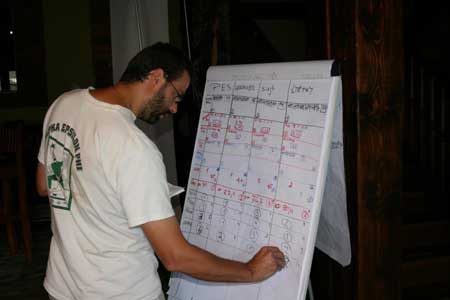
Václav Dostál is carefully distributing points in week-long game "Temelín, build up!"
Sunday’s theme was When too many neutrons are bad for your health. It consisted of another Compressed Nuclear Lecture on nuclear safety. This one emphasised the physical barriers that protect against the leakage against fission products and PSA. Shortly after lunch another quiz tested how much the students had paid attention to the morning lecture and more points were distributed among the teams. That afternoon Dr. Radek Škoda’s gave a lecture on nuclear economics, during which fascinating data on long-term economics were demonstrated with crystal clarity. Dr. Škoda then gave an eye-catching presentation that compared Gen II, Gen III and Gen IV reactors and provided illustrations of recently designed reactor systems. Sunday’s programme concluded with a game of “Nuclear darts”, which closely resembles normal darts but uses a fuel assembly diagram with various fuel elements enrichment as the dart board.
Monday was set aside by the organisers for a visit to the Temelín NPP’s simulator. Consequently, the day was renamed Homer Simpson Monday. Students were shown reactor emergency shutdown training exercises that showed what would happen were a main circulation pump failure to occur or a leakage from the primary to the secondary circuit. After lunch Pavel Šimák presented the latest developments with regards to new build in the Czech Republic and the neighboring countries. The day finished with another game, called “Nuclear Jeopardy,” where students competed to provide the fastest correct answer to nuclear-related questions and gained points for their respective teams.
Red and expensive, or green and cheap? was the theme for Tuesday. The day started with a lecture from Iva Kubáňová, from ČEZ’s New Build Department. She highlighted the Environment Impact Assessment (EIA) procedure for the proposed Temelín 3 and 4 units. Mrs. Kubáňová highlighted many interesting issues raised by the proposed Temelín 3 and 4 new build project, such as 60 years of operation time, a load factor of above 90% and fulfilling European Utility Requirements (EUR). The lecture was followed by another Compressed Nuclear Lecture, this time given by Karel Katovský. The subject was the fuel cycle. Tuesday afternoon was devoted to outdoor activity: teams were equipped with a GPS equipped with a cipher quiz on Počátky. After returning to “home base” teams spent the evening playing the quiz game Who wants to be nuclear millionaire? It gave them a chance to show off how they had rapidly increased their knowledge of nuclear.
On Wednesday, the working theme was Do you speak atom? It was all about nuclear communications. The day began with a lecture from Marie Dufková, one of ČEZ’s senior communicators. She shared with students her experiences with communicating with the media and the general public. After lunch another outdoor activity was prepared: Building your own NPP! Teams were assigned the task of being one of the interested parties in the construction and operation of an NPP (a utility, the nuclear regulator, a NPP vendor and the government). The communication was limited to writing short notes for other teams – without knowing the objective of the game (which was building an NPP). The activity was followed by another presentation on nuclear communications, given by Jiří Marek. He actually gave two lectures relating to radioactive waste, the first one on the NIMBY (Not In My Back Yard) phenomenon and the other one on the Oklo natural reactor. As the sun was setting, young representatives of five potential nuclear employers engaged in a debate with students, followed by a fun Q&A session from the SSoNE organisers. Among the questions asked were How many steps and floors must you go up every day? or Does your director know you by name? The objective of the Q&A session was to give the human face of often tough PR presentations.
Thursday focused on the theme From quarks to the electric plug and began with a presentation from Ondřej Zlámal. He spoke about the relation between nuclear research and the commercial utilisation of nuclear power. Václav Dostál used rest time after the lunch to give a presentation on nuclear weapons: their history, basic design approaches and what threat they pose. That afternoon Miroslav Kawalec gave a lecture on the Czech industry’s preparedness for nuclear new-build. Students then took part in another points-gaining activity: the identification of common movie mistakes about nuclear. To give the students some time off, the evening was reserved for “inverse activity”: instead of the students it was the organizers themselves who had to play the role of students and were given various tasks to perform, such as to come up with a rap song on the subject of nuclear, compose nuclear poetry and nuclear country songs, take part in quizzes and in a blind taste “coolants” competition (the teachers had to guess which “coolant” they had tasted).
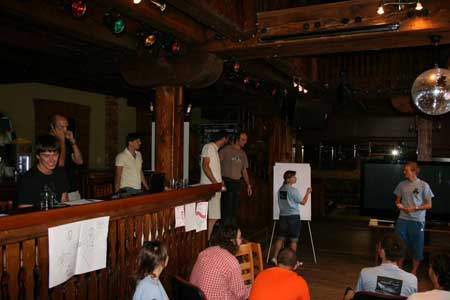
Inverse activity: Organizers are given instruction how to prove themselves
The final day of the SSoNE addressed the topic Is one catfish better than five trouts? The day was devoted to small modular reactors (SMR). Jan Zdebor, from Škoda JS, delivered a lecture on the perspectives, advantages and disadvantages of SMRs and analyzed all recently-developed SMRs in detail. After his speech, the organisers announced the winners of the Temelín, build up! game and the summer school was brought to a close. Students then returned home to their universities.
We all hope that CENEN’s Summer School of Nuclear Engineering left a deep impression on the students and set them nicely on course for a future in nuclear.
http://www.euronuclear.org/e-news/e-news-38/romania.htm


Bucharest, Prague and Szeged will host, up until 2015, the most ambitious ever pan-European scientific research infrastructure in the field of laser technology.
The project is called the ELI - Extreme Light Infrastructure - or extreme light infrastructure study. Ranked as the most important research project in the world devoted to laser technology, ELI groups together 40 research institutions and higher education establishments in 13 European Union countries. Along with the three pillars that have already been chosen as leaders of the project, the most important one being Bucharest up until 2012, a fourth should also be built and operational by 2017. The three facilities will be able to produce high ELI intensities - about six orders of magnitude more than the most powerful lasers used today – around 12 petawaţi - i.e. tens of trillions of watts.
In Hungary, at Szeged, the ELI pillar – called Attosecond ELI - will be dedicated to analysing extremely fast dynamics by taking snap-shots in the attosecond scale (a billion of a billion of second) of the electron dynamics in atoms, molecules, plasmas and solids. It will also pursue research into ultrahigh intensity lasers.
In the Czech Republic, in Prague, the ELI pillar called ELI Beamlines will focus on providing users with ultra-short energetic particles (10 GeV) and radiation (up to a few MeV) beams produced from compact laser plasma accelerators.
The third infrastructure, called ELI Nuclear Physics, will be built using the Magurele platform, which has a long tradition of studying both lasers and nuclear physics – the first Romanian laser, developed by Professor John I. Agîrbiceanu’s team, was inaugurated on 20 October 1962.
"It is the first project of its kind east of the Rhine," says Nicolae Zamfir, Director of the Institute of Physics and Nuclear Engineering (IFIN). "They chose Romania because the country benefits from a great number of experts in nuclear physics. In addition, Romania is a founding member of two large projects that have already begun, Fair and SPIRAL2,” explains Zamfir. Magurele also provides Romania with an added advantage: it is the only eastern European institution built along Western lines. Horia Hulubei (not the institute founder) had a vision and designed Măgurelele based on what he had seen in France. At Magurele there is the largest concentration of specialists in nuclear physics in all of Eastern Europe.
Total project costs are quite high. For example, the preparation phase will cost 85 million euros and construction 400 million euros. You also have to add to this the cost of operating the facility, which is estimated at 50 million euros per year. The ultimate objective is to produce 100 petawaţis. Construction of the plant, which will produce 10PW, starts in 2011 and will end in 2015.

Question: What does the Extreme Light Infrastructure project represent?
Answer: The pan–European Extreme Light Infrastructure (ELI) projects refers to the construction of extremely powerful lasers (tens of PW – by comparison with only hundreds of TW currently installed in the world). It was initiated in 2005 by a group of physicists from Europe. In 2006, the ELI project was listed in the European Strategy Forum for Research Infrastructures list of priorities for research infrastructure projects.
Question: Romania is involved in this project together with the Czech Republic and Hungary. How did this cooperation come into being and who was the initiator of the project? How will the states cooperate?
Answer: Between 2008 and 2010, the project was financially supported by the European Commission, by means of a Preparatory Phase project in which 13 countries participated, including Romania. On 1 October 2009, the Executive Committee of the project decided to build the ELI project in three locations: Prague (the Czech Republic), Szeged (Hungary) and Bucharest (Magurele), Romania. The three infrastructures are independent of each other, but have complementary scientific purposes. This decision, validated in December 2009 by the European’s Commission Competition Council, allowed for the construction of the first large-scale research infrastructure of its kind in Central and Eastern Europe. On 15 April 2010, the representatives of the three ELI partner countries signed an agreement for the establishment of the ELI Consortium (ELI-DC, ELI – Delivery Consortium), which will coordinate the activities related to the utilisation of the ELI infrastructure at the European level.
Question: What is the European Light Infrastructure-Nuclear Physics (ELI-NP) and how does it work?
Answer: ELI-Nuclear Physics (ELI-NP) is the infrastructure dedicated to nuclear studies of the interaction between powerful laser radiation and matter. The main instruments used will be two large lasers (10 PW capacity) and an intense, high-performance source of γ radiation. Due to the worldwide combination of these instruments, the ELI project will permit unique research to be carried out into fundamental physics and applied research. The study experiments will analyse the photonic interaction of large intensity lasers with matter.
Question: What are the applications of ELI-NP?
Answer: For future research, ELI-NP will have a significant impact in the following areas:
Life sciences: new medicines and radiopharmaceuticals, new therapies (alternatives to current cancer therapy based on ionic fascicles), greater understanding of the effects of radiation on biological samples, the X-ray imaging of ultrafast molecular processes.
Materials science: the mechanism of damage resulting from exposure to intense photonic radiation fluxes, electrons, positrons or neutrons
Nuclear industry: the characterisation of nuclear fuel and radioactive waste management
Safety: radiography of sensitive nuclear materials: Uranium and Plutonium
R&D: Innovation in the fields of optics and laser technology
New concepts in the construction of particle accelerators
Question: Are there any other Romanian organisations involved in the ELI project alongside IFIN-HH?
Answer: ELI-NP will be built in Romania, using the physics platform of Magurele (near Bucharest) and the organisation that is responsible for supplying ELI-NP is the National Institute for Nuclear Physics and Engineering “Horia Hulubei” (IFIN-HH). In addition to IFIN-HH, the National Institute for Laser Physics, Plasma and Radiation (INFLPR) is also involved in the project, together with other institutions that are part of the Magurele Platform. Also, great support for the project has been given by the University of Bucharest, the Politechnica University of Bucharest and other universities in Bucharest and Romania.
Question: What are the reasons why Romania was selected to host the ELI-NP project?
Answer: The Magurele Platform is a hub of physics and science, not only for our country, but for Eastern Europe. Its history begins with the construction of the Institute for Atomic Physics, the first research institute in the country and the commissioning, in 1956, of the first large piece of physics equipment, the Nuclear Research Reactor and the Cyclotron. This was followed shortly by the construction of the first Romanian electronic computing system (1957) and of the first laser in the country (1962), which is the third functional laser in the world (after the United States and Russia). The Magurele Platform offers today the most significant concentration of researchers in Central and Eastern Europe with special skills relevant to the ELI-NP project, i.e. laser physics, nuclear physics, material physics, engineering, etc. It compares with any of the world’s largest research centres.
Question: Do you believe that the ELI-NP project offers opportunities for studying and employment for young specialists in Romania?
Answer: ELI-NP will be an international research centre of great importance in the field of high-power lasers and photonic interaction with matter. Within this context, it will provide support training for the workforce through graduate and post-graduate university studies in a variety of fields, including physics, engineering, chemistry, biology etc. At the same time, it will represent a focal point for elite researchers in laser physics, nuclear physics and materials physics, as well as for engineers from Romania and worldwide. We hope that this infrastructure, with the 200 researchers who will work here during the operation phase, will contribute to stopping the “brain drain” phenomenon in Romania and attract Romanian scientists who want to complete their studies and further develop their skills in Universities and research centres.
http://www.euronuclear.org/e-news/e-news-38/kozloduy.htm

The concept of building units 7 and 8 at the Kozloduy NPP site at the end of the operational lifetime of units 1 to 4 dates back to the beginning of the 1980s. During the construction of units 5 and 6, two locations were envisaged for the potential new units.
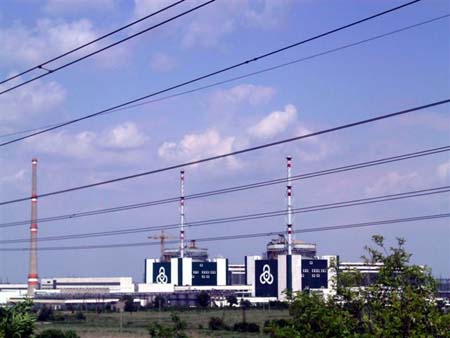
This concept has been repeatedly studied since then, inter alia in the context of the EU accession-related premature closure of Units 1 to 4, about which three studies were conducted. The latest preliminary feasibility study on potential new build at Kozloduy was implemented, in 2009, by Iberdrola Generation S.A.U and Iberdrola y Construccion S.A.U. The study confirmed the viability of building one or two new units using the assets available at the Kozloduy site, such as electrical and technical infrastructure, an existing reliable system for radiation monitoring, the availability of facilities for the secondary processing of radioactive waste and spent fuel storage, the presence of skilled and experienced personnel, planned construction of a national radwaste storage facility for low and intermediate-level waste close to Kozloduy site, etc. The study concluded that the new generation capacity could partially compensate for the closure of units 1 to 4 (1760 MW) by ensuring a reliable electricity source. It would allow full and effective use of the infrastructure built by Kozloduy NPP plc (which after the shut down of Units 1 to 4 was only used up to 50%), thereby decreasing the initial investments and the terms of the return on investment.
The construction and commissioning of new nuclear capacity at Kozloduy will further contribute to the strategic long-term goals related to: increasing direct and indirect employment in the North-West region of Bulgaria, safeguarding the scientific and technical potential and the driving forces behind economic growth, ensuring a reliable and affordable energy supply in Bulgaria and the wider region, decreasing significantly environmentally-harmful emissions and, last but not least, the implementing of the Energy Strategy of Bulgaria to 2020, which projects the further development of the nuclear energy sector.
Based on the above, and respective of the legislation in force, Kozloduy NPP plc has stated its intent to invest. The Bulgarian Government was considering this independently of the plans for building Belene NPP.
On 29 March 2012, the Council of Ministers asked the Minister of Economy, Energy and Tourism to submit a proposal for the construction of new nuclear capacity at the Kozloduy NPP site (CM Decision №250 of 29.03.2012, p. B).
On 11 April 2012, the Council of Ministers gave their consent in principle under Article 45, paragraph 1 of the Safe Use of Nuclear Energy Act (SUNEA), for undertaking activities necessary for the construction of new nuclear capacities at Kozloduy. The Council of Ministers required the Minister of Economy, Energy and Tourism to present a report under SUNEA Article 45, paragraph 2, for adopting a decision on substance, as well as a report concerning the legal and organisational structure for the project’s implementation (Protocol № 14 of the CM Meeting on 11 April 2012, p. 28).
In accordance with Article 8 (4) of the Energy Law and SUNEA, Article 45, a nuclear power plant shall be built following a decision on substance from the Council of Ministers (CM), a proposal to build a nuclear power plant being submitted by the Minister of Economy, Energy and Tourism, accompanied by an assessment of nuclear safety and radiation protection, environmental impact and physical protection, the social and economic significance of the construction of a nuclear power plant for the nation or for particular regions, radioactive waste and spent nuclear fuel to be generated, as well as their management. Based on the above-mentioned assessments, the Council of Ministers will take a decision on substance, including the specific technology to be used the unit’s overall installed capacity and the commissioning schedule for the new plant.
The investment intent for the construction of new nuclear generating capacity based on Generation III or III+ light water reactor (LWR) technology shall be implemented in strict compliance with the nuclear safety-related legislation in force, the European Utility Requirements for LWR Nuclear Power Plants, as well as the latest IAEA requirements for nuclear new build. Market principles will be applied for the project financing, without state funds and/or guarantees and/or loans or the participation of strategic investors being sought.
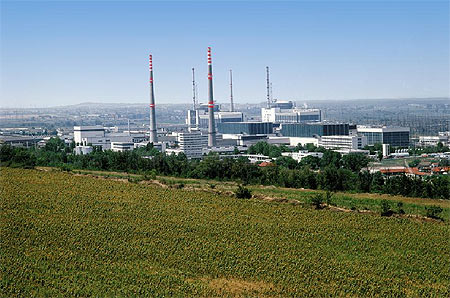
Under the remit of the Minister of Economy, Energy and Tourism, an inter-institutional Expert Task Force was established to deal with new build issues. The Task Force includes representatives of the Ministry of Economy, Energy and Tourism, the Nuclear Regulatory Agency, the Ministry of Health, the Ministry of Environment and Water, Bulgarian Energy Holding, the National Electric Company and Kozloduy NPP plc. The Task Force objectives are to identify the proper legal and organisational forms for the new build implementation, as well as to develop an implementation programme and schedule.
In fulfillment of the Council of Minsters’ decision in principle, and in compliance with the Environment Protection Law, Kozloduy NPP plc informed the impacted population and municipalities, as well as the Minister of Environment and Water, of its investment intent for building Generation III or III+ nuclear capacity at Kozloduy NPP. Consistent with SUNEA Article 45 (3), the investment intent was also notified to the competent authorities in Romania, through the Minister of Foreign Affairs.
On 3 May 2012, Kozloduy NPP’s Board of Directors took a decision to establish a new subsidiary company to organise the implementation of the investment intent. On May 5, 2012, the Bulgarian Energy Holding gave the necessary permission. On May 9 2012, the project company Kozloduy NPP New Build plc was established, with Kozloduy NPP plc as a sole owner of the capital. The company’s goal is to implement new build at Kozloduy NPPand to organize the process of conducting a feasibility (technical & economical) study, site selection and an environmental impact assessment (EIA).
In June 2012, Kozloduy NPP – New Build plc issued a call for proposals for conducting a feasibility study for two options: (1) a VVER unit using the nuclear island equipment already procured for the Belene NPP project, with new instrumentation and control systems and a turbine island supplied by different manufacturers; (2) the construction and operation of a 1000-1200 MWe PWR licensed in the country of manufacturing. The study will evaluate the site suitability, radioactive waste and spent fuel management, use of existing infrastructure and facilities, licensing, local economic aspects, as well as safety level, technical features and the economics of the PWR options currently available on the market. The study will also suggest and analyze assumptions for developing the project financing model.
The call for proposals elicited responses from Areva, Areva/Mitsubishi, Risk Engineering, Westinghouse Electric Spain and Worley Parsons. In August 2012, as a result of the competitive procedure the project company KNPP-New Build plc awarded a contract to Westinghouse Electric Spain.
The feasibility study is expected to be completed by March 2013.
A competitive procedure for conducting a site selection study was launched in June 2012 and completed by the beginning of September 2012. The contract was awarded to the Bulgarian company Risk Engineering Ltd. According to the Study Terms of Reference, four possible locations for the new unit (units) on the Kozlduy site are to be assessed:
A 55-hectare spot located North-East of KNPP Units 1 and 2
A 55-hectare spot located to the East of KNPP Units 1 and 2
A 53-hectare spot located to the North of KNPP Units 5 and 6
A 21-hectare spot located to the west of KNPP Units 3 and 4.
The study should assess the available spots taking into account the safety-related and environmental legislation in force, as well as the latest IAEA standards and requirements for site selection and assessment. Based on the results, the study should assess the degree of Kozloduy site protection against external hazards induced by meteorological, hydrological and geological phenomena. The study should classify the four above-mentioned spots according to a developed assessment methodology and result in a proposal for the optimal location for the new build. The final study results were expected to be delivered in April 2012.
In September 2012, with regards to the investment intent for nuclear new build at Kozloduy, Kozloduy NPP – New Build plc invited all interested parties to declare their interest and present proposals for conducting an Environmental Impact Assessment (EIA) and developing an EIA Report in accordance with the environmental and biological diversity legislation in force. The EIA Report should evaluate the environmental impact of new nuclear build at the Kozloduy site, taking into account the cumulative effect of the joint operation of all the facilities located there. The EIA Report should evaluate also the trans-border impact and present the relevant results in a separate chapter. The effect of the investment project on the protected areas in the site neighborhood shall also be included. When finished, the EIA Report shall be evaluated by the Ministry of Environment and Water and shall be subject to a public debate.
During the final stage of the EIA process, a decision from the Ministry of Environment and Water shall be sought as to the admissibility of the investment intent implementation, based on the EIA Report and its attachments, documents and positions received during the EIA procedure and the results of the public debate.
The licensing process for this new nuclear build will be initiated shortly by submitting a request for a Site Selection Permit, issued by the Chairman of the Nuclear Regulatory Authority, under SUNEA Article 33, paragraph 2 and paragraph 3. The request documentation required by law is currently under preparation.
Once the studies and assessments required by legislation are completed their results shall be provided, by May 2013, to the Council of Ministers and will serve as a necessary factual basis for the governmental decision on the substance of the nuclear new build investment intent, including the choice of specific technology to be used, number of units and their overall installed capacity, construction and the commissioning schedule of the new plant.
In case of a positive governmental decision, after the site licensing a third-party strategic investor will be sought for the 49% of Kozloduy NPP – New Build plc’s capital.
The Bulgarian Nuclear Society, Kozloduy, October 2012
http://www.euronuclear.org/e-news/e-news-38/sne-news.htm

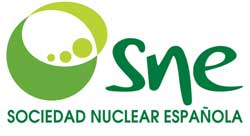
The 38th Annual Meeting of the Spanish Nuclear Society (SNE) took place in Cáceres, from 17-19 October 2012 (www.reunionanualsne.es).The meeting was supported by 25 sponsors and 31 companies participated in the parallel exhibition. It was attended by 630 delegates and 80 accompanying guests.
The programme included the submission of 308 technical papers and featured two interesting "Learn more about ..." courses, three monographic sessions and three plenary sessions that were attended by a large number of participants.
The three sessions focused on highly relevant issues. The first session was entitled: The centralized temporary storage facility for irradiated fuel. It provided an analysis of the main features of this Spanish project from an ENRESA management perspective, featured the associated technology centre and its importance to research and development into spent fuel and radioactive waste and outlined its economic impact on the neighbouring population.
In the session entitled: Impact of Fukushima on the continuous improvement of safety participants representing different countries provided status updates on Fukushima one year after, highlighting the security improvements that have been made as a result of the accident in Japan, United States and Europe. As regards Spain, in particular, participants were provided with the perspective of the operator and regulator.
In the third session, entitled: Challenges of the new nuclear generation, speakers from the USA, the UK and Finland presented different solutions for overcoming the difficulties of financing new build schemes and providing the stable regulatory framework that is required to ensure the viability of new build projects that have achievable construction and the commissioning deadlines.
In addition, monographic sessions devoted to such interesting topics as Nuclear Emergency Plans, New safety requirements: International organizations approach and Energy model and climate change also took place.
Courses aimed at encouraging the exchange of information and knowledge about topics such as Reorganization, adaptation and improvement of fire protection plans in nuclear power plants, Implementation of the IS-30"and Decontamination and remediation of contaminated sites were also presented.
Nuclear Youth presented, with great success, a Basic Course in Nuclear Science and Technology and Women in Nuclear (WiN) organised a conference entitled: Applications of Ionizing Radiation.
In addition to the plenary sessions, and as part of the wide-ranging programme of technical sessions, the latest state-of-the-art technology used in our industry was presented in connection with such topics as nuclear safety, fuel, radioactive waste, nuclear medicine or radiation protection. Special importance was given to research and development aimed at continuously improving the operation and maintenance of our plants, as well as the participation of Spanish industry in new international projects.
The technical programme was complemented by a cultural and social programme, which centred on the beautiful city of Cáceres - an old city that was awarded official UNESCO World Heritage status - and on the art, gastronomy and culture of the region of Extremadura.
During the official dinner SNE presented their awards. The SNE Medal was awarded posthumansly to Diego Molina, who died in February. He was Vice President of SNE and Nuclear Production Manager at IBERDROLA, and would have become the next President of SNE.
The thirty-ninth Annual Meeting will be held this time next year in Reus and will be hosted by ENDESA.

The SNE’s Technical Seminar 2012 took place in Tarragona on September 20. The level of participation made it a great success. It was dedicated to the subject of Safe actions in nuclear facilities: Human factors in engineering”. The participants also had a look at the Human Factors Simulator unit, which had been installed by TECNATOM.
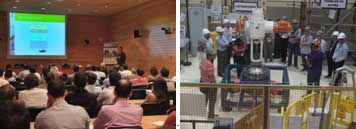
The SNE awarded 8 scholarships from the 26 applications that were received as a result of the 2012 call for post-graduate scholarships in nuclear expertise.
SNE also awarded a prize for the best SNE 2012 thesis, Master's thesis or dissertation and for the prizes for the 5th AREVA Photo Contest.
The Spanish Young Generation Nuclear will host the 2014 edition of the International Youth Nuclear Congress (IYNC), in the city of Burgos.
Finally, Nuclenor did not request authorisation of an extension to the operation of the Santa Maria de Garoña NPP. The plant will definitely shutdown in 2013 and will be dismantled.
http://www.euronuclear.org/e-news/e-news-38/YG-Reporter.htm

Top Fuel 2012, an annual conference organised by ENS, the American Nuclear Society and the Atomic Energy Society of Japan, took place from 2-6 September 2012 at the Renaissance Hotel, in Manchester, UK. This conference, a flagship ENS event, provides a platform for bringing together nuclear fuel specialists from around the world to discuss advances in nuclear fuel management technology, and to apply the findings of cutting-edge research for the development and manufacture of the high performance nuclear fuels of today and tomorrow. The technical scope of Top Fuel 2012 included a wide range of applications relating to nuclear fuel technology, from fuel rod to core design and manufacturing; from performance in commercial and research reactors to current and future developments and trends.
Approximately 300 delegates attended the conference, which kicked off on the evening of 2 September with a welcome drink.
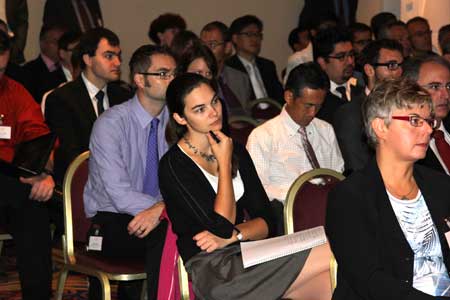
The opening session on Day 1 of the conference, on 3 September, featured a welcome speech from Mark Basset, Deputy Chief Inspector at the UK’s Office of Nuclear Regulation (ONR). After thanking the organisers and sponsors of the conference for their support, he outlined not only his own work at the ONR, but also the Office’s mission to ensure that at all times the safety of British citizens is paramount. The main subject of his speech was the issue of safety. He explained how in addition to the risks associated with nuclear energy, society should be made more aware of its benefits. By comparing the Fukushima accident with the deep water horizon accident, Mark Basset highlighted the differences that exist between “typical industries” and the nuclear industry. For example, the whole nuclear industry is held collectively responsible when a disaster occurs - not any one company - and yet when an accident like the deep water horizon one occurs the operating company is held directly responsible (in this case it was BP). The nuclear industry is a hostage to its collective responsibility.
Mr Basset then addressed the subject of responsibility for enhancing standards. This lies primarily with the IAEA, but ENS also has a responsibility to contribute to the process. He stressed once again that it is necessary to communicate clearly and transparently with the public, and that communication should be done jointly by all nuclear partners.
The keynote speaker during the opening session was Victor Inozemtsev, from the IAEA. He presented the IAEA’s activities in the area of fuel engineering. He gave a short status update onthe nuclear power plants currently in operation and mentioned how Fukushima has slowed down the building and planning of new reactors. He then gave an overview of the Agency’s Nuclear Safety Action Plan, which is composed of 12 areas of action, or “sub-programmes.” Fuel engineering is one of these sub-programmes. Finally, Mr. Inozemtsev explained the multiple possibilities offered by the research that the IAEA is carrying out into the improvement of nuclear fuel safety.
The first plenary session was chaired by John Jones, one of TopFuel’s co-organisers, and ENS President, Marco Streit. The first of three presentations was made by Andrew Lingenfelter, Vice President of Fuel Engineering at Global Nuclear Fuel. He spoke about GE Hitachi’s improvements and developments in the nuclear fuel sector, which cover all aspects from the front end, via plant performance and safety & innovation to the back end. A big problem in the US is the licensing process for new power plant sites. Without licences no new for R&D in the fuel management field is possible. Over the last few years much effort has been made and considerable improvement achieved when it comes to plant performance. Due to new technologies there are almost no fuel failures in the US anymore. One major challenge was the channel bow; this could be reduced by 80% due to new materials. A topic that Mr. Lingenfelter touched upon in this talk, and which recurred often during the conference, was the power enhancement of NPPs, which leads to R&D needs to keep the safety at the highest possible level. In his conclusion Mr. Lingenfelter admitted that the US had lost its leadership role in the back end research to Europe.
The second speaker was Jeffery Bradfute, who gave a presentation entitled: Next generation fuel designs – a Westinghouse perspective. After making an announcement about next year’s Top Fuel Conference in Charlotte, US, he began by focusing on some historical issues and on the challenges facing new generation fuels. He then spoke about light water reactor (LWR) fuel cladding corrosion, which is decreasing thanks to new developments. The main focus of his presentation, however, was the development of accident tolerant fuel and of new materials that should ensure that fission products are safely enclosed, that no melting can occur and that explosive gases are retained. One material that he highlighted is SiC, a ceramic matrix composite with low n-absorption.

The final speaker during the first plenary session was Alain Frichet from AREVA. The title of his talk was Investment in competences and innovation for the highest safety standards and performance. He pointed out that human resources are also an important part of the safety equation, and that best practises in this area should be shared. He presented the best practise training programmes offered at all major AREVA centres. Many safety issues, Mr Frichet pointed out, are identified thanks to R&D programmes, so these programmes should definitely be maintained. Finally, he stressed that safety must be the first priority and emphasised the importance of fuel development when it comes to creating safer designs.
During the coffee break delegates had a possibility to look at the poster exhibition. Then they were offered a choice between two parallel sessions: Operation and Experience or Transient Fuel Behavior. I chose the latter one, which was chaired by Nicolas Wacekel and Toyoshi Fuketa. There were six presentations in this session. The first one was given by Mr. Garat, who talked about a new cladding material - the M5® cladding, which has a lower H content than Zircaloy and has been tested under accident conditions. The results show that the margins with the M5® cladding are acceptable, in RIA and LOCA. The second presentation was given by Mr. Cazalis, who addressed the behaviour of MOX fuel under reactivity initiated accidents. The third presentation was given by Mr. Clifford. He introduced the US regulatory strategy for revising the RIA’s acceptance criteria. Several tests and experiments have been performed to show the feasibility of this new approach. Separate criteria for cladding failures related to pressurized water reactors (PWR) and boiling water reactors (BWR) were introduced and core “coolability” criteria was revised.
The next presentation was given by Dr. H. Yueh, who focused on new techniques for the testing of cladding material under RIA conditions. He explained the need for new test procedures in order to obtain more data on cladding performance. Temperature performance was another issue taken into consideration for these tests, as well as for modified burst tests.
In my opinion, the most interesting presentation in this session was the one given by Mr. Schrire, who spoke about Transient dry-out in Forsmark 2 during a fast pump runback – verification of peak cladding temperature. He gave an overview about the event that occurred in June 2008, where the core was loaded with an operating limit for the minimum critical power ratio that was based on the assumption that only a controlled ramp-down of the pumps could occur. After the event it was calculated that about 84 fuel assemblies briefly violated the safety limit minimum critical power ratio and 18 of these experienced a very short transient dry-out. The main interest of their research was analysis of the peak cladding temperature that could have occurred. They used the Westinghouse BISON module to calculate this parameter. The other field of research was the hardness of the cladding and how it changes during the temperature increase. During reactor operation the cladding hardens quickly, and it was thought that with a temperature increase there might be a recovering effect for weaker cladding. However, the experiments showed that this was not the case.
The final presentation in this parallel session was by Mr. Smith, who focused on the CHF testing of VVER-1000 fuels in the Westinghouse ODEN loop.
After the lunch break the delegates could once again choose to attend one of two parallel sessions. I attended the Operation and Experience II session, which was chaired by José Aycart and Lars Hallstadius. It began with a presentation by Mr. Kim entitled: Atomic diffusivity measurement of Xenon Gas in various types of fuels with low burn-up by post-irradiation annealing test. Research in this field focused on the Xe- diffusion in ceramic fuels, which was tested under various conditions and using different fuel types. The method they used was irradiation in the HANARO research reactor for a short time period of time (16min), and subsequent annealing at several temperatures. To analyse the results, gamma detectors were used, including a filtration system.
The second presentation, given by Mr. Arana, was entitled: Post–irradiation examination of high burn-up fuel rods in Vandellos II. Many European NPPs are performing power increases at the moment, and this leads to a higher fuel burn-up. Therefore, it’s necessary to study any possible safety concerns regarding this change in fuel use. Mr. Arana described a post-irradiation examination of 8 rods, with a burn-up of up to 75MWd/kg U. Their fission gas release was examined, as well as the fuel swelling. They had different Gd contents in the fuel as they thought this might have an impact on the outcome of the experiment, but no difference was observed. One result noted was that fission gas release is enhanced with higher burn-up.
The third presentation, entitled: Successful high burn-up irradiation campaign of the GE14 LUAS at TVO’s OL1 Reactor: Inspection results and assessments, was given by Mr. Dunavant. He highlighted the burn-up increase from 45MWd/kg U up to 50-55MWd/kg U and the experiments related to this project. The investigating team wanted to see the GE14s performance at higher burn-up levels, so they outlined the history of the project, the Kr-85 experiments and the cladding oxidation data they had gathered.
The fourth presentation gave an overview of the PIE examinations on the AGR fuel pins that were carried out by Studsvik. It was the first PIE examination of AGR fuel pins, which were performed with in-pool inspections to observe the graphite sleeve. The two remaining presentations during this session were given by Mr. Cantonwine, who talked about the Performance of an updated cell friction methodology and by Mr. Druenne, who gave delegates an insight into In-Core fuel management with mixed fuel assemblies for Belgian nuclear power plants.
The next two parallel sessions focused on Design and Materials – Hydriding and oxidation, and transient fuel behaviour, respectively. The first session consisted of five presentations and the second one of six. The main focus of the first one was to show the different material properties of Zirconium in alloys.
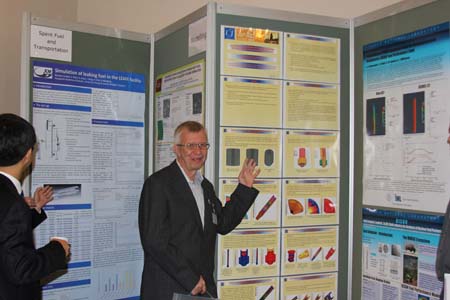
On Day 2 the conference started with a plenary session co-chaired by John Jones and John Roberts. The first presentation was given by Mr. Lalieux. He gave some insight into Back end requirements that need to be taken into account in the fuel design phase. He stressed that, as the risk in waste storage is present for hundreds of thousands of years, radiation must be contained by the choice of the storage. In his opinion, the most promising solution would be geological disposal, which has 3 safety functions: containment, retardation and isolation. Another point that he emphasised was the fact that there should not only be man-made barriers (engineered barrier system - EBS) but also natural barriers. The Belgium EBS is driven by two key factors: the thermal component and the radiotoxicitiy and radiation component. The first factor can only be assured over a certain period of time, and after the failure of this barrier there will be a release into the rock. Therefore, either the containment has to be improved, or the front end manufacturing needs to take this risk into account and include small changes. In his closing remarks Mr. Lalieux said that more R&D is needed on the front end side to ensure the safe and secure storage of spent fuel.
The second presentation in this plenary session was dedicated to the subject of Molecular Dynamics and was given by Mr. R. Grimes. Mr. Grimes showed delegates a simulation on an atomic scale, which will help to better understand fuel dynamics.
The last presentation was given by Mr. L. Hallstadius, who spoke about the evolution of fuel materials. He gave a broad overview of the development of Zircaloy, explaining why the material was chosen in the first place, and which new concepts are being developed. He then explained the H problem, and also the corrosion troubles that have been experienced with Zircaloy.
Next on the agenda were three more parallel sessions entitled respectively: Design and Materials - hydriding and Oxidation, Fuel Rod Thermal Mechanics and Operation and Experience. I attended the last one, which was chaired by Marco Streit. The first presentation during this parallel session was given by Mr. D.Lutz, who focused on BWR fuel failures. In the US they have experienced fuel failures in the 2nd usage cycle. Mr. Lutz’s presentation illustrated the steps that were taken to investigate the reasons for these failures. The conclusion that he drew was that it was most probably a mixture of responsibility, materials and water chemistry.
The second presentation was given by K.Yueh. The focus of his talk was the Revised industry guidance on LWR fuel surveillance and inspection, which has resulted in the production of a new guidance document. The third presentation was given by Martina Mala, who gave an introduction on the Fuel Inspection and Root Cause study at the Temelin NPP. She explained how the fuel inspections have mainly been done in western countries, and how the IAEA has launched an initiative aimed at determining the root causes of fuel failure, as 25% of the causes usually remain unidentifed. The fourth presentation was given by M. Aullo. He focused on the Reduction of fuel assembly bow with RFA fuel. J.Bradfrute then outlined Westinghouse’s fuel design and performance, highlighting the techniques they use in fuel R&D, and underlining Westinghouse’s goal of achieving a 100% reliable fuel and peak -free performance by 2015. The final presentation during this parallel session was given by E.I. Grishanin, who enlightened delegates about New Cores on Based Coated Particles for Power Water Reactors (PWR-CP).
During and after the lunch break posters were presented and delegates had an opportunity to talk to their designers.
The first parallel afternoon session offered a choice between the three following topics: Design and Materials - Advanced Materials, Fuel Rod - Thermal Mechanics and Spent Fuel and Transportation. Mr. G. Demazy chaired the last of the 3 sessions, which started with Mr. D. Papaioannou, from the ITU in Karlsruhe, talking about Oxidation Studies on Irradiated UO2 fuels. Almost no research had previously been carried out on this topic, in spite of the great concern that remains about the handling and storage of spent fuel. Therefore, long-term research had to be performed over a period of months and years – even though almost no sophisticated test equipment was available. The result of his study was that oxidation occurs as the U3O8 builds up.
The afternoon’s second presentation was given by Mr. Quecedo, who concentrated delegates’ attention on the Results of Thermal Creep Tests on Irradiated Zry-2. The third presentation, given by H.Issard, focused on Dry storage reliability solutions for the management of spent nuclear fuel in the long term. His presentation provided an overview of different spent fuel storage facilities and reprocessing systems. Mr. Farkas then gave a presentation about the modeling with MCNP that has been carried out at Bratislava, highlighting the results of criticality safety analyses carried out on fresh and spent fuel storage and the managing of VVERs using code MNCP 5. The final talk was given by G. Grandi, who outlined Studsvik’s CMS capability for spent nuclear fuel research. This research has revealed a new use of the CMS code for the modeling of nuclear fuel.
The last parallel sessions on Day 2 were Design and Material New Concepts, Spent fuel and Transportation and Fabrication and Seismic Simulation respectively. That evening the conference gala dinner that took place at Manchester Town Hall gave us a great opportunity to make new contacts, have a dance and generally have fun.
The final day of TopFuel 2012 started with a plenary session chaired by John Jones, who began by thanking the conference sponsors. He then gave a presentation entitled: Pre-licensing assessment of fuel designs for new commercial nuclear reactors within the UK. As there hasn’t been any new licensing for new fuel designs in the UK for decades, new regulations and licenses need to be established. Therefore, all the risks must be evaluated and the “as low as reasonable practicable” principle should be applied. The licensing will take into account all possible accidents that might occur. His conclusions were as follows: The aim is to provide a robust demonstration that the plant can meet the challenges presented by anticipated faults and that all reasonably practical measures have been taken to reduce the risk to a broadly acceptable level.
The second talk in this last plenary session was given by N.Waeckel. The focus of his talk was R&D in Support of Safety Analyses and Design. Mr. Waeckel stated that the safety analysis design limits should be upgraded as problems with fuel occur. The in-pile testing will be part of this enhancement process. The new French research reactor will be a big help for the carrying out of these new tasks. Part of his presentation was dedicated to accident tolerant fuels, where the right concepts must be found, the manufacturing concerns must be resolved and the behaviour under normal operation and accidental situations must be addressed. More testing and modeling should be done to keep the fuel safe.
The last plenary session presentation was about Lessons learned from running OECD-NEA fuel projects. Mr. Vitanza, of the OECD/NEA, introduced the Halden research reactor project, which was used for carrying out fuel and material studies. As the research reactor is very flexible, it can operate in ways that an NPP would never be capable of. He listed all the testing possibilities and the lessons learned.
The subsequent parallel sessions were divided into two parts: Design and Materials, Methods and Testing and Modeling Thermal Hydraulics and Coupling. The first session was chaired by John Roberts and the first presentation was given by Mr. Burukin. Mr. Burukin talked about the Research Reactor MIR: the Russian National base for testing water cooled reactor fuel rods under transient and accident conditions. He explained the potential offered by the research reactor and highlighted the characterisation of the loop facilities. The techniques for fuel testing were also demonstrated, as well as the possibility of testing full size VVER rods. The MIR can also do power ramping, cycling, RIA and LOCA tests to determine fuel rod behaviour.
The 2nd presentation, given by Mr. Mozzani, focused on: Iodine-induced stress corrosion cracking (I-ISCC) of Ziracloy 4: Effect of mechanical loading history, iodine concentration and irradiation on crack initiation. The pellet-cladding interaction is the main cause of multiple fuel failures in NPPs, which reduces power.
Mr. Granfors gave the next presentation. The topic this time was Radial profiling and isotopic inventory analyses of irradiated nuclear fuel using laser ablation ICP-MS. The fuel pellets were handled in hot cells and laser ablation was done with the help of a floating 213nm laser. The material was moved to ICP (6000 K) ionized, and analysed with a mass spectrometer. The calibration of the MS is difficult, so the only comparisons made were with solutions of acid fuel. The overall result of this study was that these techniques can be used instead of traditional dissolution analyses, as they represent a time saving and cost reduction method that achieves comparable results to traditional analyses.
The CEA then presented to delegates their GRIZZLY experiments. The final presentation was given by D.V. Markov, who talked about the "FEDS" Database and its application for carrying out the tasks of reactor material science.
The final parallel sessions kicked off after lunch. The topics presented to the conference participants were Design and Material and Multi-physics.
The conference ended with a farewell cocktail.
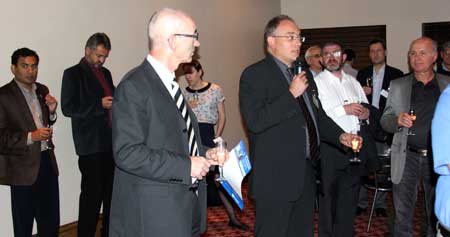
In my opinion, TopFuel 2012 offered a great opportunity to gain a broad overview of the current status of research and development with regards to fuel, fuel designs, cladding and materials, as well as status updates in many countries from a regulations perspective. There is undoubtedly great interest in making fuel safe and current trends point towards the development of “accident safe fuel” and the enhancement of cladding resistance to accidents. There will always be more conservative views regarding cladding materials, but new concepts and techniques have been investigated and will be tested in future.
I would like to thank the ENS for the opportunity given to me to participate in this conference.
http://www.euronuclear.org/e-news/e-news-38/TopFuel12-YG-Reporter.htm


After three years absence the TopFuel conference once again returned to Europe, more specifically to Manchester, UK . It took place from 2 to 6 September at the Renaissance Manchester Hotel, right in the heart of the city, which provided an amazing backdrop to the conference.
Top Fuel 2012 was organised by the European Nuclear Society (www.euronuclear.org) in cooperation with the American Nuclear Society and the Atomic Energy Society of Japan. TopFuel’s primary objective is to bring together leading specialists in the field of nuclear fuel management from around the world to analyse the advances that have been made in nuclear fuel management technology and to use the findings of cutting-edge research to help manufacture the high performance nuclear fuels of today and tomorrow. And, from a personal perspective, I can say that it succeeded. Many specialists gathered in Manchester and shared their knowledge and experineces. It was good opportunity for me as a student and a young specialist in the field of nuclear fuel to learn and take part. Nothing can beat gaining experience like this.
The conference was divided to the two parts: three days were reserved for the conference proceedings itslef and one day for the technical visits. Some delegates visited the Westinghouse Springfields site and others visited the Dalton Nuclear Institute, at the University of Manchester. The conference itself was divided into six sessions, supported by a poster exhibition. The six sessions were as follows: Plenary Session, Operation and Experience, Transient Fuel Behaviour, Design and Materials, Modelling and Spent Fuel and Transportation. Some sessions took place in parallel. There were a total of 113 oral presentations given and 47 posters exhibited. All the papers that were presented are available online on the TopFuel 2012 website at:
(www.euronuclear.org/events/topfuel/topfuel2012/transactions.htm).
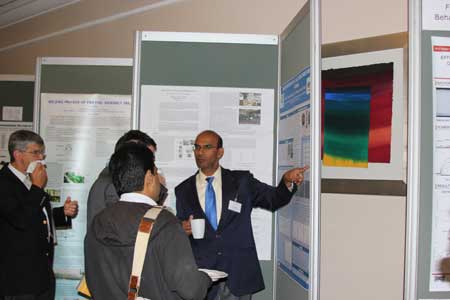
The conference started officially on Monday 3 September with a welcome address by Mark Basset and a keynote address by Victor Inozemtsev. The speeches focused mainly on the global situation and what is needed to ensure the future sustainability of nuclear energy in the energy market.
Over the course of the three days many issues about nuclear fuel were discussed. Most presentations were focused on light water reactor (LWR) fuels, but advanced fuels were disussed too, for example a fuel with silicon carbide cladding. Among the frequently mentioned topics at the conference were high burn-up, MOX fuel, fission gas release, post-irradiation examination, fuel failures during operation (such as oxidation and the corrosion of Zr alloys), hydridation, cracking, the influence of different additives on the properties of fuel cladding, transient behaviour of fuel and computational codes and modelling. From my point of view, there were a lot of highly specialised presentations and projects relevant to delegates’ work, whatever their field of interest. Many delegates discussed their work experiences, addressed key issues and expressed their particular perspectives. For me the gratest asset of TopFuel 2012 was the opportunity it offered me to present my work, to discuss it with my peers - and analyse their work too. It enabled me to gain new insight into certain problems and to see what is new in my field of interest. TopFuel 2012 met all my requirements.

Another essential part of conference is the social programme, which allows participants to make new contacts and to finish off the discussions that they weren’t able to complete during the conference sessions or coffee breaks. The social programme began with the eve-of-conference welcome drink, on Sunday 2 September, which concided with the conference pre-registration. On Tuesday 4 September, we participated the TopFuel 2012 Conference Dinner, at Manchester Town Hall. Manchester Town Hall is one of the most iconic landmarks in the city. It is situated on Albert Square and was completed in 1877. I have to say that the Town Hall is an amazing and wonderful place and I really enjoyed being there. First we enjoyed a glass of sparkling wine in The Bees room. The bee is one af symbols of Manchester. Bees are known as hard workers with a vital role to play in the ecosystem. That is why the bee symbolises Manchester’s industry; it was adopted during the Industrial Revolution, in which Manchester played a leading role. After drinking and discussing we relocated to the Great Hall. The hall´s ornate ceiling illustrates the principal countries and towns with which Manchester has traded in the past. Another thing that is really interesting to see is the magnificent organ, which has over 5,000 pipes and is almost five metres tall.
During the excellent three-course dinner, which was served with Italian wine, we were surprised by opera singers dressed as waiters. Suddenly, one waiter started singing Italian opera arias with a glass of wine in his hand. After few minutes all three waiters were singing. It was breathtaking because the singing was supported by the Great Hall’s excellent acoustics.
After dinner and the brief opera performance we danced to the sound of modern music or discussed fuel issues with our peers. During such events many people share their knowledge and experiences. They provide an excellent opportunity for young people like me to mix and network with other experts and to share common interests.
On Wednesday 5 September, the Farewell Drink provided an appropriate conclusion to conference, before the technical visits kicked off the following day. I was one of the group that visited Springfields. After one and half hour in the bus and checking in at reception, we were given a great presentation outlining the history of the site, the products and services that it provides for its customers, and how Springfields fits into Westinghouse’s global business activity. The site has been in opration since 1946 and has been producing fuel for more than 50 years. Now the fuel production is focused on AGR and PWR reactors. In the UK there are one Magnox NPP (Wylfa 1), six AGR NPPs (Dungeness B 1&2, Hartlepool 1&2, Heysham I-1 & I-2, Heysham II-1 & II-2, Hinkley Point B 1&2, Hunterston B 1&2, and Torness 1&2) and one PWR (Sizewell B).
After the presentation we were devided into two groups. The first one had lunch, while the second one visited the Oxide Fuel Complex. Then the groups changed round. We were able to see how AGR fuel is made. It is amazing how different the fuel is when compared with LWR fuel.
And how do they make the AGR fuel? At first, it is necessary to change the UF4 to UF6. Then it is sent to be enriched to about 3 % of 235U. After the UF6 is enriched, it is converted to UO2 powder in a kiln. Then the UO2 powder is processed, it is pressed, heated in a furnace and grinded to produce the fuel pellets. The fuel pellets are stacked inside a stainless steel tube (the fuel cladding) that is one meter long. After the tubes are sealed and pressurised with helium, they are put together in the graphite sleeve to form the AGR fuel assembly. Each fuel assembly contains 36 fuel pins (tubes) and each fuel pin contains 64 pellets. After the fuel assembly is inspected to check the quality of the fuel, it is packed and ready to use in an AGR reactor. The AGR core is higher than the LWR, it contains seven or eight fuel assemblies asembled vertically, so it is about eight metres high.
The procedure for LWR fuel fabrication is different. Initially, LWR fuel pellets undergo the same manufacturing process as AGR fuel pellets. After fabrication, however, the fuel pellets are loaded inside zirconium alloy tubes, which are about three metres long. Then they are pressurised with helium, sealed and fitted inside a pre-assembled framework. They are also inspected before being used in the reactor. The LWR core 50% shorter than the AGR core. Moreover, the LWR fuel rod contains not only the pellets but also the plenum springs. These pellets are put in the cladding tube, they are not stacked inside a fuel rod, like the AGR pellets.

I would like to thank the ENS staff (especially Emilia Janisz and Kirsten Epskamp) for its organisation of this great conference and for the very friendly atmosphere. Personally, as the Czech Young Generation reporter I am also grateful for the financial support that I was given by the IAEA and by my employer, the Research Centre Rez.
Martina Malá, Research Centre Rez , Reactor Services Division, Technological Circuit Innovation Department, Czech Republic,mlm@cvrez.cz
http://www.euronuclear.org/e-news/e-news-38/IYNC2012.htm

The organisation with the same name was created in 1997 with the purpose of representing and uniting the interests of young nuclear specialists from around the world. The newly created entity organised the first congress in 2000, in Bratislava, Slovakia. It continues to host biannual IYNC conferences in different countries around the world in order to encourage diversity and promote the integration of as many young people as possible. The mission of IYNC is to promote information and experience exchange between generations, to prepare future nuclear specialists and to communicate and inform the public on the benefits of nuclear power, thereby supporting its development. This year’s conference was organised in co-operation with the North American Young Generation Network and took place for the first time in the United States. The city of Charlotte is an important economic centre and home to important nuclear companies (AREVA, GE and Westinghouse) and financial companies, such as Bank of America. There are seven nuclear power plants operating in the vicinity of Charlotte.
IYNC 2012 focused on the concept of “strategic planning” in the nuclear field and its ramifications on three components directly linked to the young generation: opportunity, growth and innovation. As was the case with previous congresses, IYNC 2012 benefited from the participation of important keynote speakers from both American and international companies, such as Jean-Pol Poncelet, Director General of FORATOM; Eric van Walle, Director General of SCK-CEN, Belgium; Steven Kuczynski, President and CEO of Southern Company, SUA; Ricardo Perez, President of Westinghouse; Alexander Fertman, Director of the Moscow Nuclear Institute, Russia and Atsuyuki Suzuki, President of the Japan Atomic Energy Agency. These senior experts shared their knowledge and experience with the young professionals present and underlined the importance of continuous training for ensuring high quality performance in the nuclear sector.
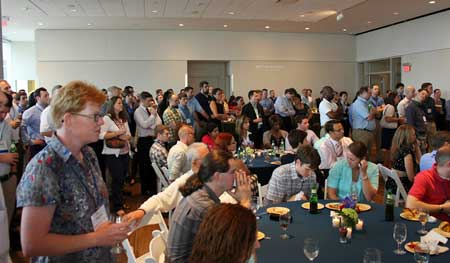
The topics under discussion focused on all aspects of the nuclear fuel cycle from design and engineering to operation, maintenance and decommissioning. Other sessions focused on the advances that have been made in nuclear medicine and radioprotection science, as well as in human resources management strategy. A total of 19 interactive workshops were organized highlighting the main concerns and issues driving the nuclear debate. These included: Is nuclear power sustainable? small nuclear power reactors, financing new nuclear projects, the results of the stress tests in different countries, etc. The workshops offered participants an opportunity to discuss these issues and to work together with other participants to find solutions.
The last day of the conference was dedicated to technical visits to the many nuclear facilities around Charlotte: the Electric Power Research - EPRI and UNCC EPIC, a Westinghouse nuclear fuel plant, the University of South Carolina, a VC Summer new plant construction project, the Duke NPP and turbine manufacturing facility and the Palmetto health gamma knife facility.
A total of 600 participants attended the conference in Charlotte, representing 33 countries. 120 technical papers were presented, making this the largest IYNC ever organised.
IYNC 2014 will take place in Burgos, Spain, with the support of Jovenes Nucleares (Young Generation Nuclear in Spain).
Andrei Goicea,
President of ENS-YGN
http://www.euronuclear.org/e-news/e-news-38/snus.htm


Pic. 1: Waiting for the first visitor
This summer the Slovak Nuclear Society (SNUS) participated for second time in the summer music festival called Bažant Pohoda 2012. The objective was to communicate with young people (aged 20 - 40 years) on all aspects of using nuclear energy and ionising radiation. The level of interest shown by participants at the festival and the positive reactions that were received following last-year’s event were very good. So, we decided to attend the festival for the second time.
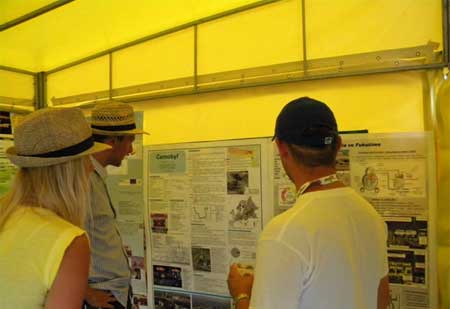
Pic. 2: Kiosk with informative posters
The main organiser of SNUS’s activities was, naturally, the SNUS Young Generation (YGN) chapter. The goal of the team led by Vladimír Míchal was clear - to increase the quality of the SNUS “info-kiosk” compared with last year – and last year’s was already pretty good. Around 20 YGN volunteers from companies like Areva, DECOM, JAVYS, JESS, Comenius University and the Slovak Technical University accepted the responsibility of achieving this ambitious goal.
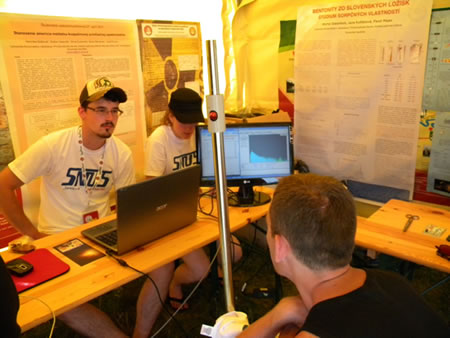
Pic. 3: Measurement in progress
As was the case year last year, visitors to the SNUS info-kiosk were given an opportunity to learn about nuclear-related topics thanks to a wide range of information tools, posters, papers written by university students and online presentations. Our demonstration of the measurement of radioactivity in objects (bracelets, mobile phones, pendants…) attracted considerable attention from festival-goers. However, the greatest focus of attention was the competition that was organised, with a Merida mountain bike offered as the prize to the winner. Competitors had to shield with their body a gamma spectrum detector, so that it could record the lowest number of photons in the “natural background.” The creativity of competitors was amazing - many of them performed unbelievable gymnastics and we even registered one attempt to shield gamma photons by using mental energyJ. This attempt was rewarded with a copy of the book Atoms in Slovakia. This should also give the winner some useful knowledge for next-year’s competition.
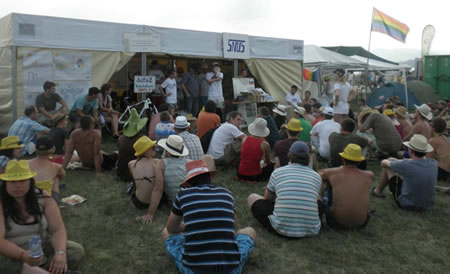
Pic. 4: High level of interest
The competition’s first prize was very attractive and the interest of competitors was just amazing. From Thursday to Saturday measurement of gamma quanta was carried out everywhere. The final count was 406 visitors! The final ceremony, during which the announcement of winner was made, attracted by so many people that I was afraid that the festival’s organisers would come to throw us out. J The lucky winner won by just several gamma photons, and the bike got a new owner – Mary who, by chance, lives in Switzerland. There could only be one winner, but all participants were given gifts such as T-shirts, caps, backpacks and badges.

Pic. 5: First price
The competition was, however, not the only activity at the festival. The fact that hundreds of visitors left with a positive attitude toward nuclear energy testified to this. Nuclear opponents could be counted on the fingers of one hand. There were top quality discussions and many visitors spent more than half an hour with us and got a lot of new knowledge about nuclear energy. As we were dismantling the info-kiosk, we came to the unanimous verdict that it was mission accomplished!
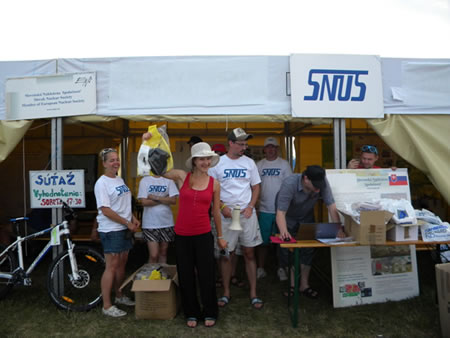
Pic. 6: Some won t-shirt...
This successful event was made possible also due to support and assistance of many people and organisations. A special word of thanks goes to the Association of Country Tourism, at Horná Seč, for providing tents and power sources and for their many mebers who helped organise this activity. They also provided transport, the instruments for doing the measurements, the money for running the competition etc. We would also like to thank the other sponsors (the universities, the utility Slovenské Elektrárne and many others). We are convinced that this is a project worth continuing with. I believe that we will write another chapter of the story next year!

Pic. 7: ... and some bike!
Adrián Krajňák
SNUS Young Generation
Faculty of Natural Sciences, Comenius University, Bratislava
http://www.euronuclear.org/e-news/e-news-38/sck-cen.htm

On 3 September 2012, the Laboratory for Nuclear Calibration received official recognition from BELMET, the Belgian Network of Metrological Laboratories that it is now considered to be the reference laboratory for the realisation and management of national standards when it comes to ionising radiation metrology, and for ensuring the convertibility to these standards of ionising radiation metrology in the dosimetrics subsection for Gray and Sievert units.
This recognition applies to both the SCK-CEN laboratory in Mol and the calibration set-up operated in co-operation with Ghent University. Other authorities can use the services of the laboratory for the calibration of their measurement instruments.
This confirmation of expertise also opens the door for membership of international organisations, such as the European Association of National Metrology Institutes (EURAMET) and the International Bureau of Weights and Measures (BIPM).
SCK-CEN submitted the request for the recognition of the Laboratory for Nuclear Calibration on 20 June 2012, and the Certificate of Recognition was signed by Belgium’s Minister of the Economy, Consumer Affairs and the North Sea, Johan Vande Lanotte, on 3 September. This official confirmation is the result of a great deal of work carried out by the laboratory team within a short space of time.
SCK-CEN
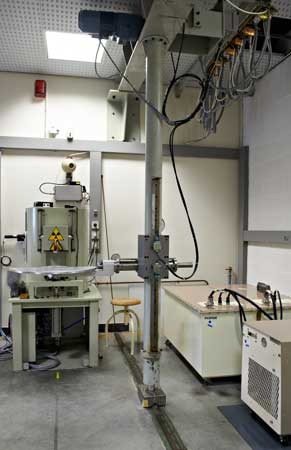
http://www.euronuclear.org/e-news/e-news-38/karlsruhe.htm

Based at the Institute for Transuranium Elements, the European Commission’s Site Management and Nuclear Safety Unit supports all activities to meet legal requirements regarding radiation, physical and environmental protection. At the same time, it delivers the technical services necessary to conduct wide-ranging research, whilst co-ordinating regular maintenance and upgrades for buildings, infrastructure and facilities.
Heading up this unit, you will interpret and apply legislation and best practice, oversee accident prevention and detection, and manage all aspects of radioactive waste handling, storage and transport. At all times, you will act as the central point of contact for the German authorities, whilst translating strategy into operational programmes, allocating workstreams, mentoring and developing your team.
Fluent in English, German and a third official EU language, and educated to at least degree level, you will bring substantial exposure to leadership roles. This should be backed by extensive professional experience of radiation protection, physical protection and the control of radioactive substances, and you will be fully versed in the disposal of hazardous wastes. Finally, you will possess a scientific mindset, strong negotiating and interpersonal skills, and the confidence to take ownership of a significant nuclear facility
http://www.euronuclear.org/e-news/e-news-38/win.htm

 |
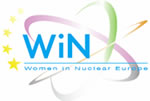 |
 |
 |
For the fourth consecutive year, the Fem’Energia Award was presented. The award highlighted the achievements of young women and women who promote gender development through their commitment to the nuclear sector.
Women in Nuclear (WiN) Europe, WiN France and EDF are convinced that jobs in nuclear are often wrongly considered “men’s jobs”. The nuclear sector would benefit from welcoming more women to its ranks. By flagging the achievements of remarkable women since 2009, the Fem’Energia Award promotes the contribution of women to the nuclear sector by highlighting those who have scientific, technical and nuclear technology jobs. The objective of the award is to attract young women and to consolidate their choice of a career in nuclear.
Once again this year’s jury was composed of nuclear experts (specialising in technical fields, training and human resources) who was impressed by the quality of the applicants, their enthusiasm, their exceptional professional commitment and their confidence in the future of their chosen career in nuclear.
The women competed for the award according to several categories, students and Professionals.
"Students"
1. Vocational secondary school students
2. Graduate students with 2 or 3 years of higher education
3. Final year post-graduate students with 4 or 5 years, and more, of higher education
"Professionals"
1. Women working in the nuclear industry in France
2. Women working in the nuclear industry in Europe
Women Working in Europe Category
Company: Axpo AG (Switzerland)
Position: Project Manager – Nuclear Fuel Department
2nd Prize Neruja SRIKANTHARAJAH
Company: Sellafield Ltd. (United Kingdom)
Position: Chemical Engineer – Magnox Fuel Drying Project
3rd Prize Joëlle VALLORY
Company: CCFE (United Kingdom)
Position: Mechanical Engineer – Central Engineering Department
WiN Europe brings together female professionals working in the many fields of nuclear science and technologies, such as energy, medicine, biology, agriculture, hydrology, environment, physics and chemistry and research. Benefiting from the cultural and geographical proximity of its members, WiN Europe aims to exchange experiences, ideas and best practices in order to play an active role at the European level, providing support for the European nuclear community and contributing to the sustainable development of peaceful nuclear applications in Europe. At the end of 2012, WiN Europe registered some 1200 members in Bulgaria, Finland, France, Germany, Hungary, the IAEA, Poland, Romania, Slovenia, Spain, Sweden and Switzerland. WiN Europe is part of the international network of WiN Global (4000 members in 102 countries).
http://www.euronuclear.org/e-news/e-news-38/nltv.htm


Dr Andy Clarke, Director
andy@nltv.co.uk
NuclearTV Ltd is a multi-media & strategic marketing provider and niche social media platform for the nuclear community.
NuclearTV was formed to improve Nuclear Knowledge Management, (NKM) specifically knowledge capture, analysis and transfer mechanisms to enable the nuclear industry to fully benefit from any knowledge captured from that industry.
NuclearTV was formed in 2011, and holds a unique position within the nuclear industry as the only media provider which combines the strengths of industry knowledge and media experience. NuclearTV is independent, endorsed by Cogent SSC, and has the remit of supporting the nuclear sector as a whole. NuclearTV offers experience, contacts and knowledge in all areas of the nuclear industry.
NuclearTV has four key focus areas:
1. Video and audio recording of lectures, courses and academic material from all areas of academia, industry, trade bodies and professional institutions related to the nuclear industry
2. Nuclear industry news including event coverage
3. Political and regulatory interviews
4. Knowledge capture, management and transfer by hosting video and audio content on www.nuclearltv.co.uk, iTunes (podcasts) and YouTube and making it as widely accessible as possible.
http://www.euronuclear.org/e-news/e-news-38/other-conferences.htm

3 - 6 February 2013
Jacksonville, Florida, USA
more
3 - 7 March 2013
Shenzhen, Guangdong, China
more

7 - 11 April 2013
Avignon, France
more

8 - 10 April 2013
Brussels, Belgium
more
![]()
9 - 12 September 2013
Bled, Slovenia
more

15 - 19 September 2013
Charlotte, NC, USA
more
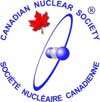
24 - 28 August 2014
Vancouver, Canada
more
http://www.euronuclear.org/e-news/e-news-37/Member-Societies.htm

Austrian
Nuclear Society |
Belgian
Nuclear Society |
Bulgarian
Nuclear Society |
Croatian
Nuclear Society |
Czech Nuclear Society |
Finnish
Nuclear Society |
French
Nuclear Energy Society (SFEN) |
German
Nuclear Society (KTG) |
Hungarian
Nuclear Society |
The
Israel Nuclear Society |
Italian
Nuclear Association |
Lithuanian
Nuclear Energy Association |
Netherlands Nuclear Society |
The Nuclear Institute |
Nuclear
Society of Russia |
Nuclear
Society of Serbia |
Nuclear
Society of Slovenia |
Polish
Nuclear Society |
Romanian
Nuclear Energy Association (AREN) |
Slovak
Nuclear Society |
Spanish
Nuclear Society |
Swedish
Nuclear Society |
Swiss
Nuclear Society |
http://www.euronuclear.org/e-news/e-news-37/Corporate-Members.htm
Links to ENS Corporate Members |
AF-Colenco Ltd., Nuclear Technology
Department |
Alpiq Ltd |
Alpiq Suisse Ltd. |
Andritz AG |
Ansaldo Nucleare S.p.A |
AREVA NP |
AREVA NP GmbH |
Atomic Energy Council (AEC) |
Atomic Energy of Canada Limited (AECL) |
Atomexpo LLC |
Atomtex SPE |
Axpo AG |
BKW FMB Energie AG |
Chilean Nuclear Energy Commisssion |
CCI AG (formerly Sulzer Thermtec Ltd) |
Design Bureau "Promengineering" |
NV Elektriciteits-Produktiemaatschappij
Zuid-Nederland EPZ (Electricity Generating Co. Ltd in the
Southern Netherlands) |
E.O.N Kernkraft GmbH |
Euro Nuclear Services BV |
Electrabel, Generation Department |
Electricité de France (EDF), Communication Division |
ENUSA Industrias Avanzadas SA |
EXCEL Services Corporation |
GE Nuclear Energy |
IEA of Japan Co. Ltd |
Japan Electric Power Information Center (JEPIC) link |
Kernkraftwerk Gösgen-Däniken
AG |
Kernkraftwerk Leibstadt AG (KKL), |
L-3 Communications MAPPS Inc. |
Linn High Therm GmbH |
Elektroinstitut Milan Vidmar |
NRG Arnhem |
NRG Petten |
NUKEM Technologies GmbH |
ONET TECHNOLOGIES |
Paks Nuclear Power Plant Ltd |
Paul Scherrer Institute |
Polimaster Ltd |
Siempelkamp Nukleartechnik
GmbH |
|
SKB (Swedish Nuclear Fuel and Waste Management
Company) |
Studiecentrum voor Kernenergie, Centre d’Etude
de l’Energie Nucléaire SCK/CEN |
Synatom |
Taiwan Atomic Energy Council (AEC) |
Taiwan Power Company (Taipower) |
"Technoatomenergo" Close Joint-Stock
Company |
Teollisuuden Voima Oyj / Industrial Power
Company Ltd (TVO) |
Tractebel Engineering S. A. |
UNESA |
Urenco Limited |
Vattenfall AB |
VNS – Vinçotte Nuclear Safety |
VTT Nuclear |
Westinghouse Electric Company |
World Association of Nuclear Operators
(WANO), |
|
http://www.euronuclear.org/e-news/e-news-37/editorial.htm

Editorial Staff:
Mark O’Donovan, Editor-in-Chief
Contributors to this Issue:
Boryana Atanasova (BNS, Bulgaria)
Attila Asźodi (Inst. of Nuclear Techniques of BME, Hungary)
Kirsten Epskamp (ENS)
Andrei Goicea (ENS YGN)
Frank Hardeman (SCK.CEN, Belgium)
Adrián Krajňák (SNUS Young Generation)
K. Katovský (CENEN, Czech Rupublic)
Martina Malá (Research Centre Rez, Czech Republic)
J. Prehradný (CENEN, Czech Rupublic)
Eileen Radde (YGN Austria)
Marco Streit (ENS)
O. Zlámal (CENEN, Czech Rupublic)
Realisation:
Marion Brünglinghaus
Rue Belliard 65, BE-1040 Brussels
Phone +32 2 505 30 50 - Fax: +32 2 502 39 02
E-mail: info@euronuclear.org - http://www.euronuclear.org
The ENS News is a quarterly publication, in electronic
form only.
Copyright notice ©2012 European Nuclear Society.
Reproduction is authorised provided that the ENS News is acknowledged as the
source – except where otherwise stated.
![]()
© European Nuclear Society, 2012